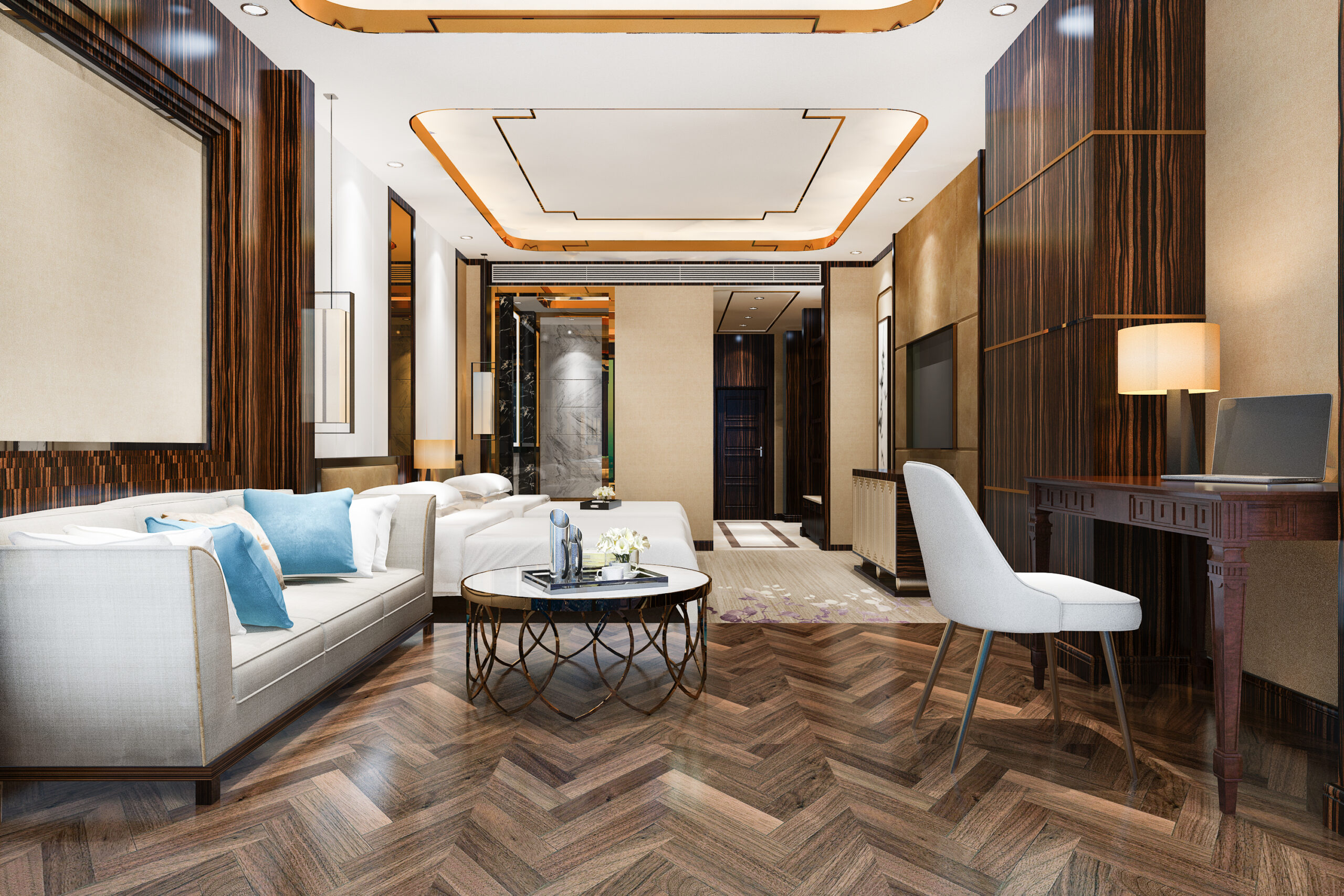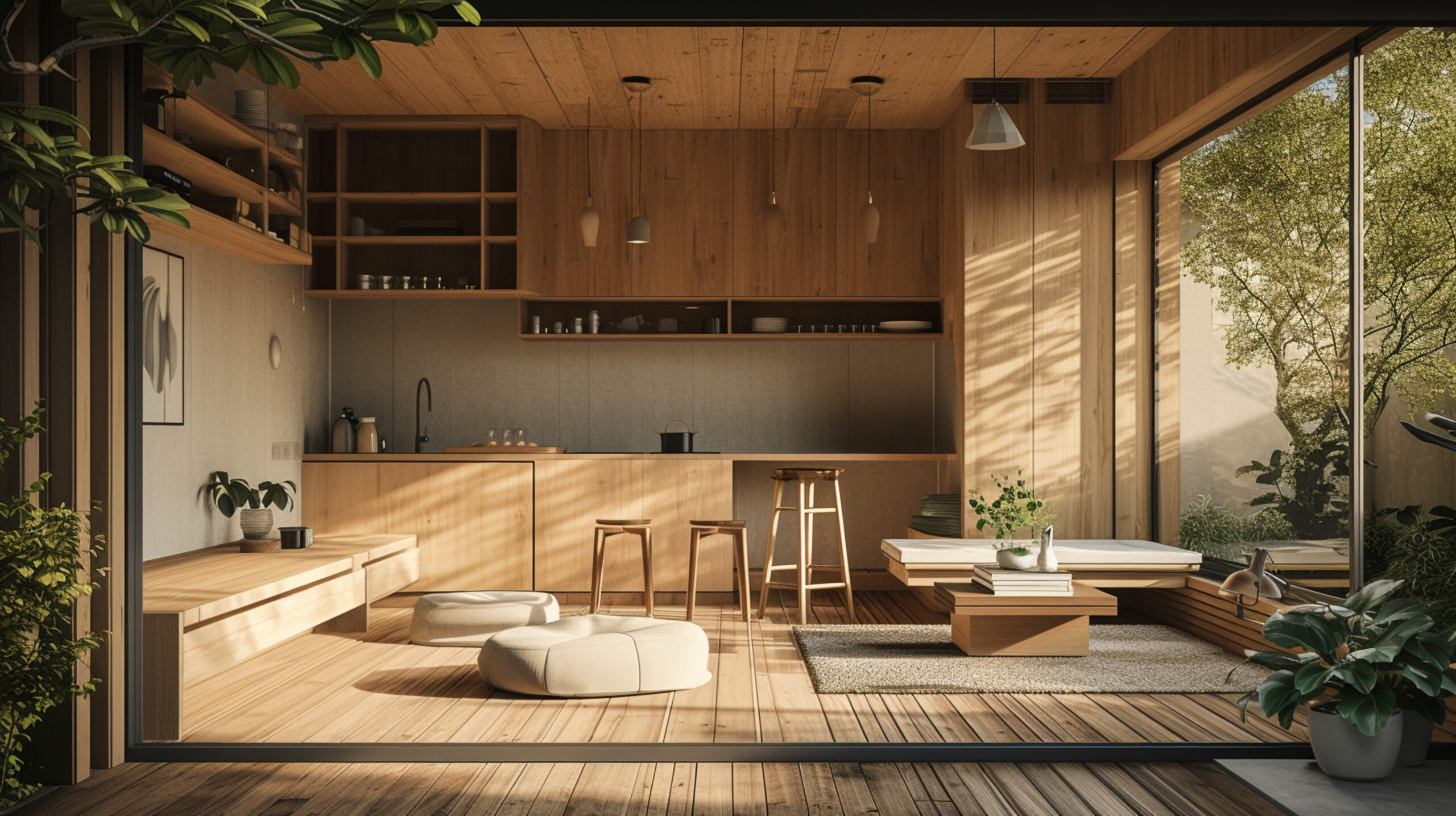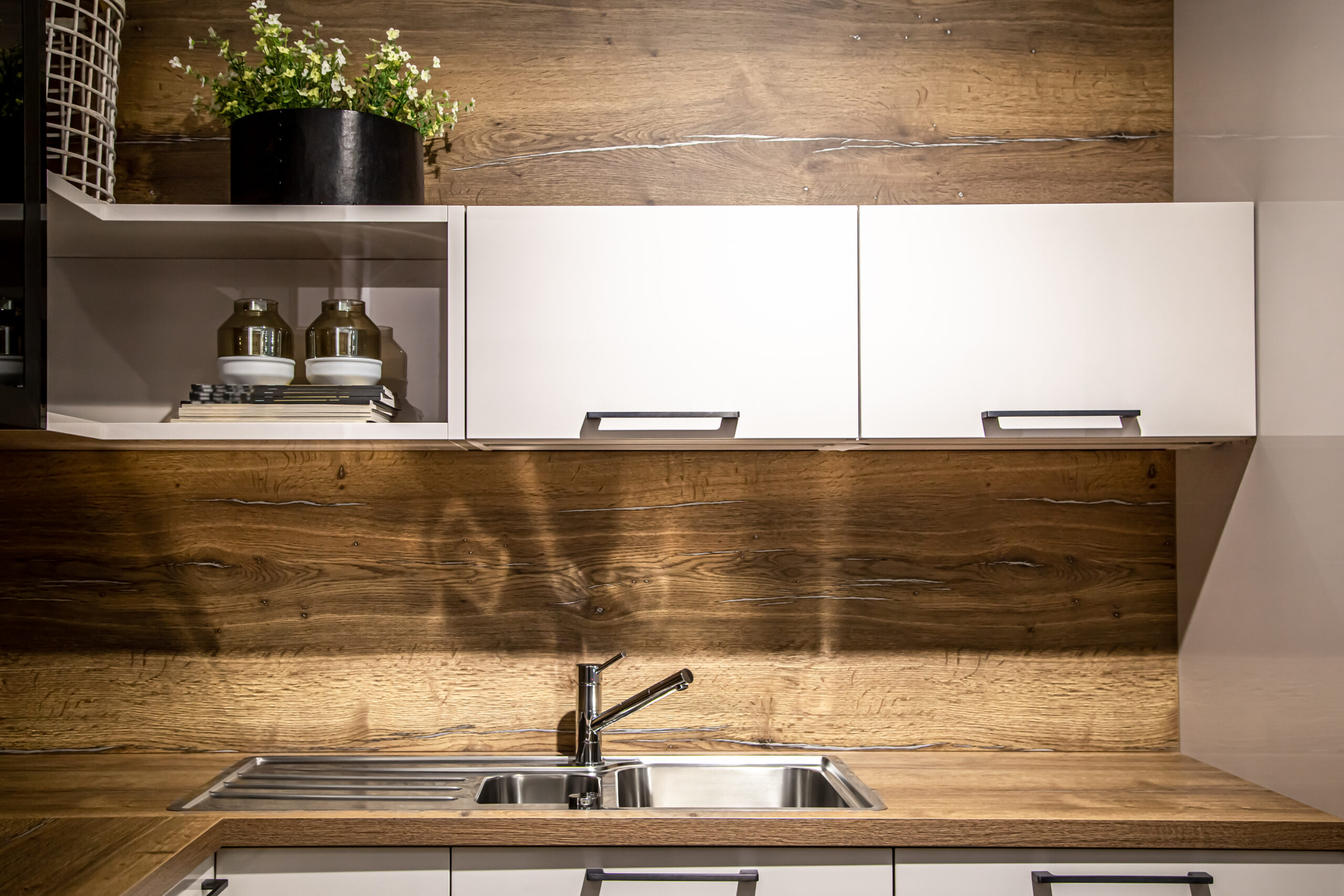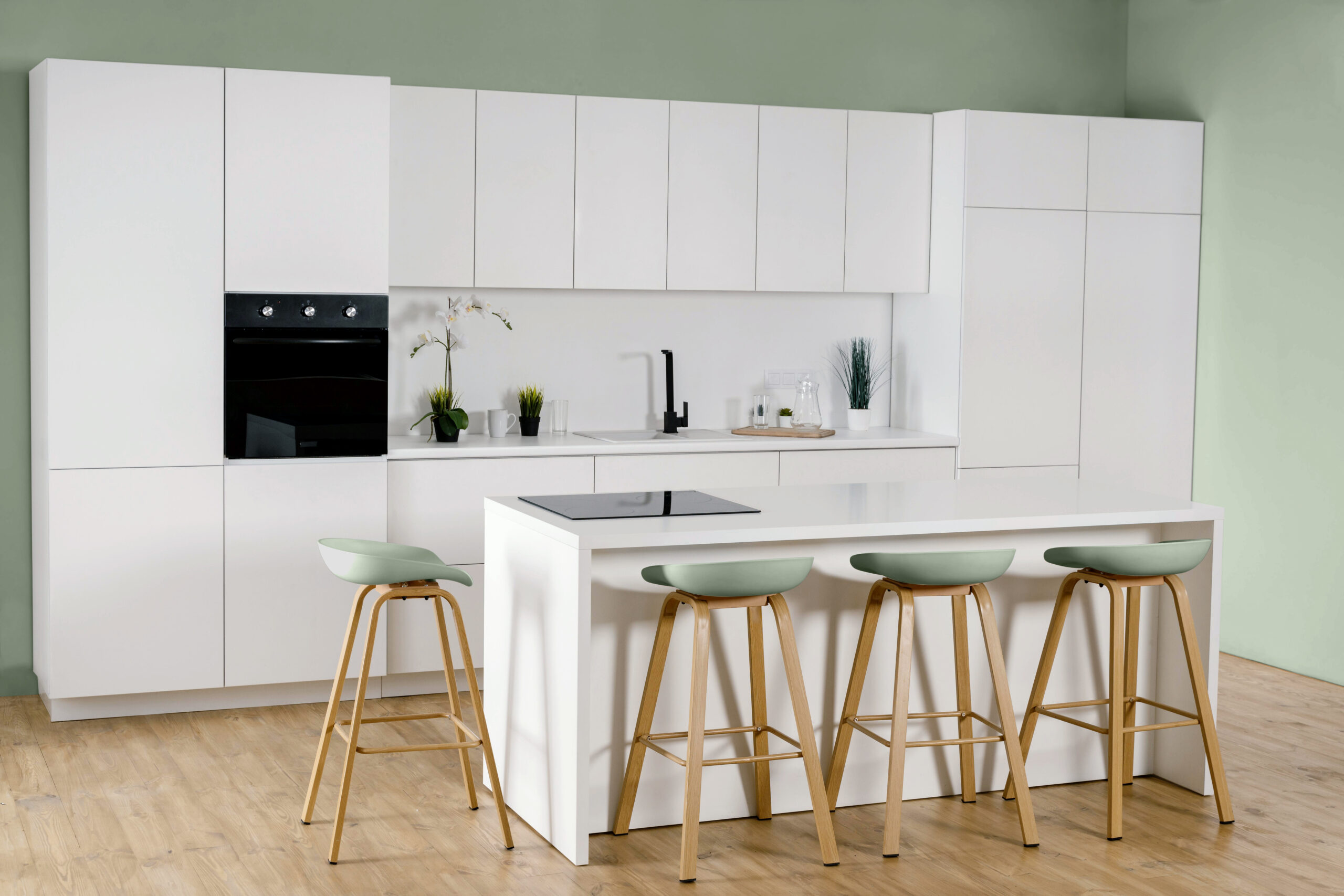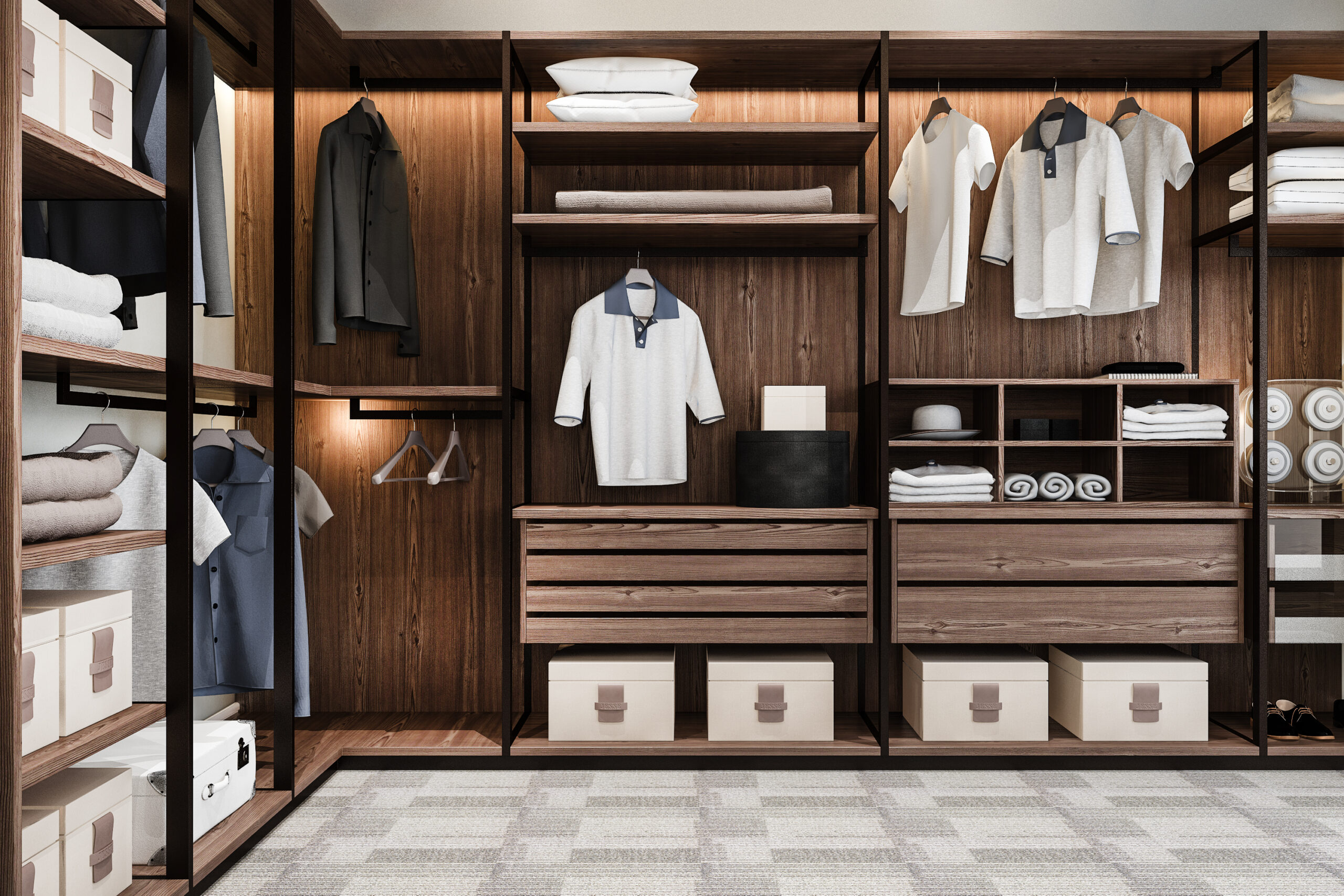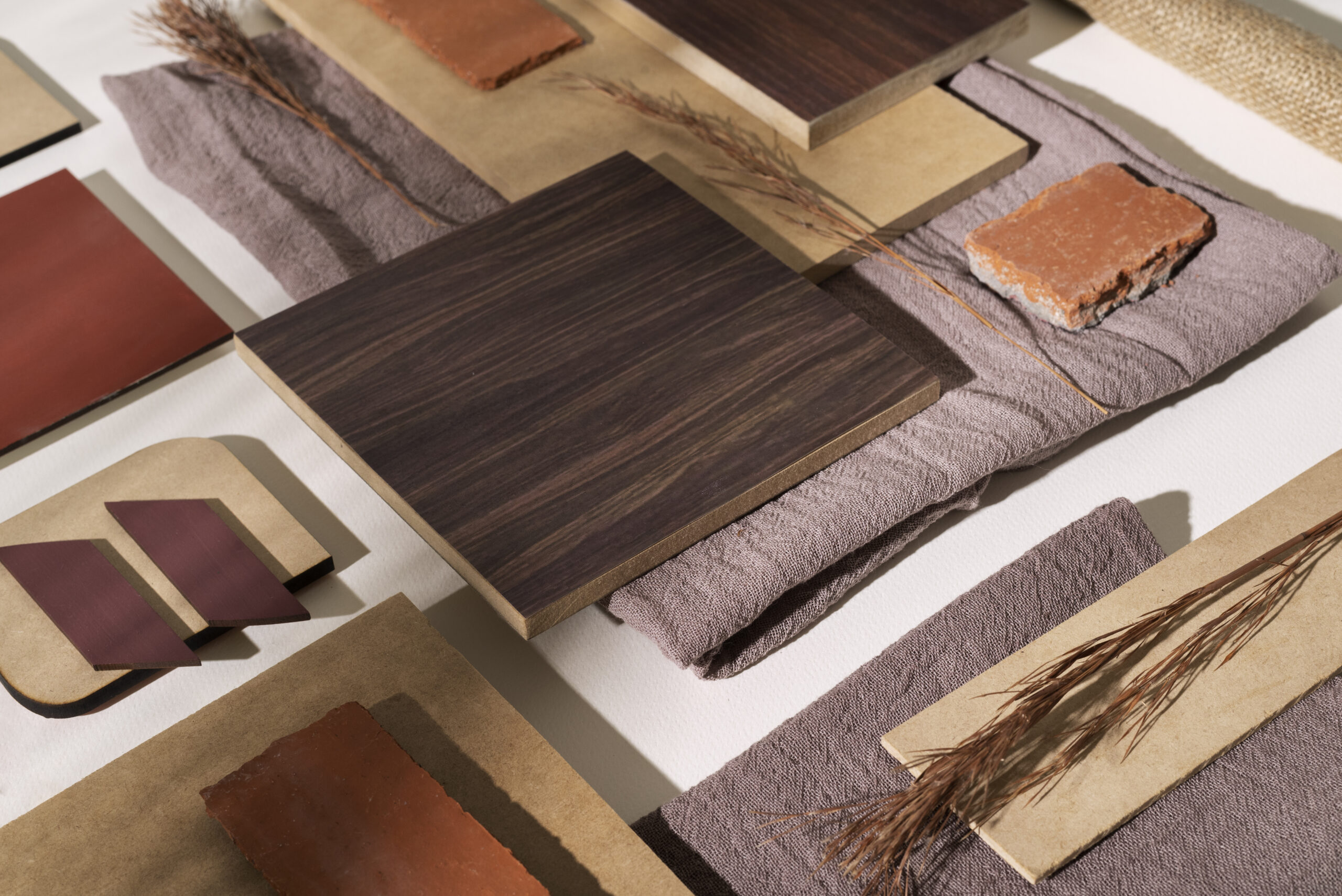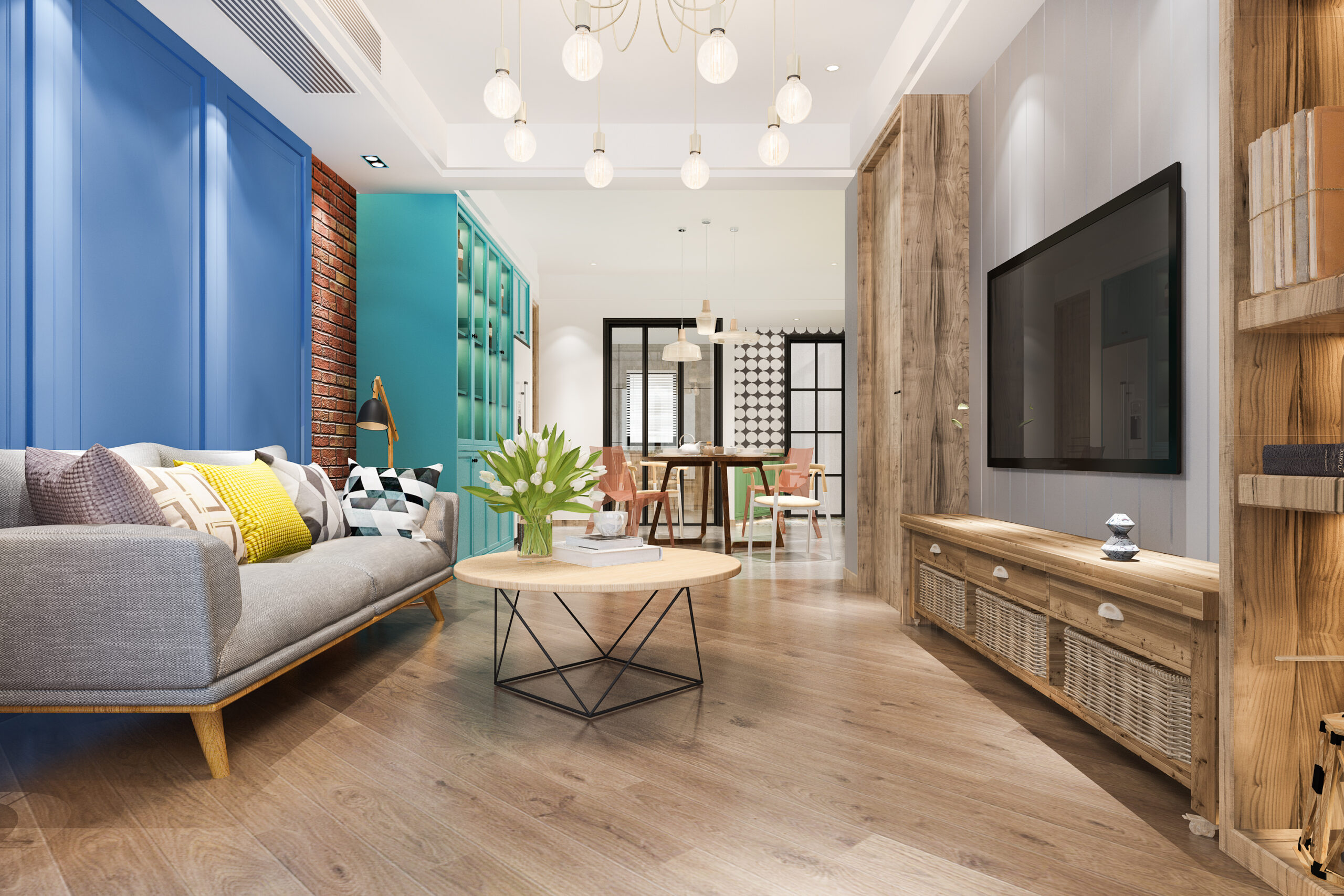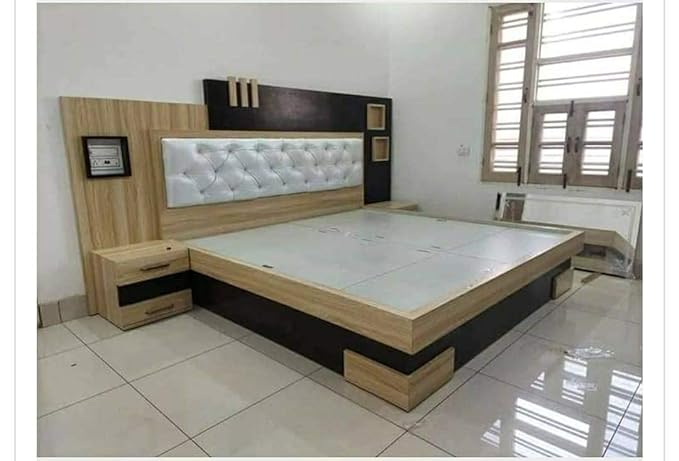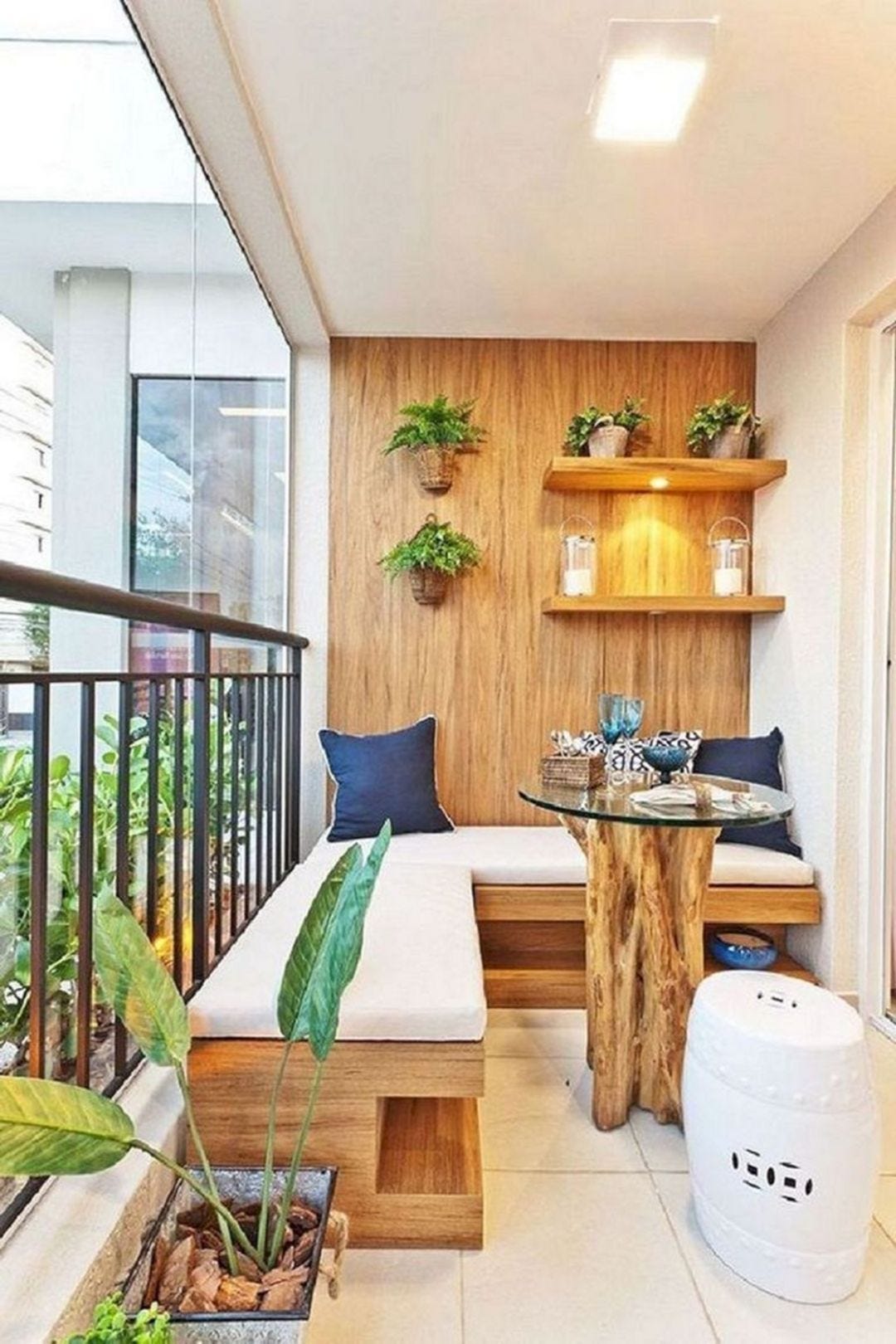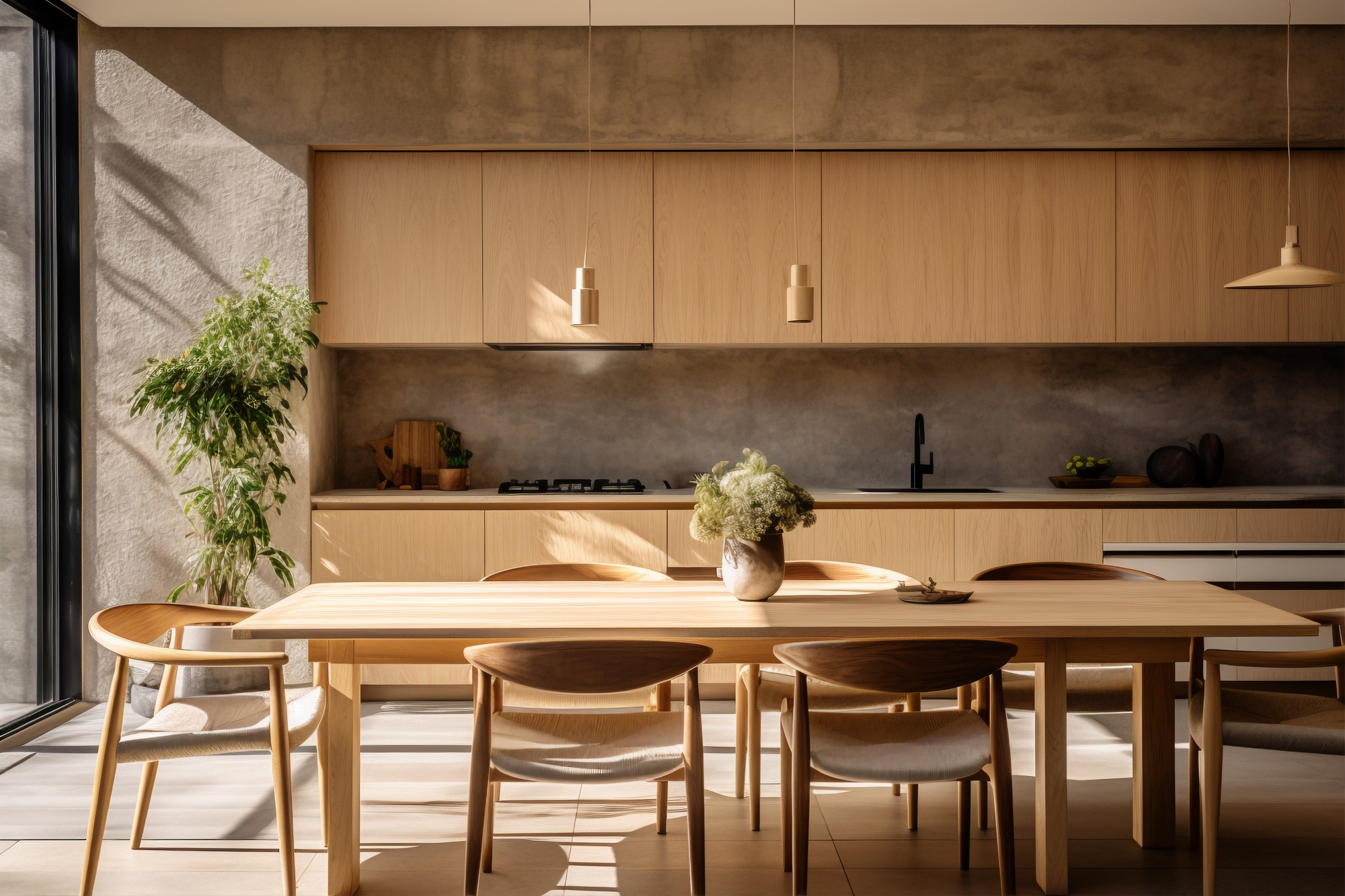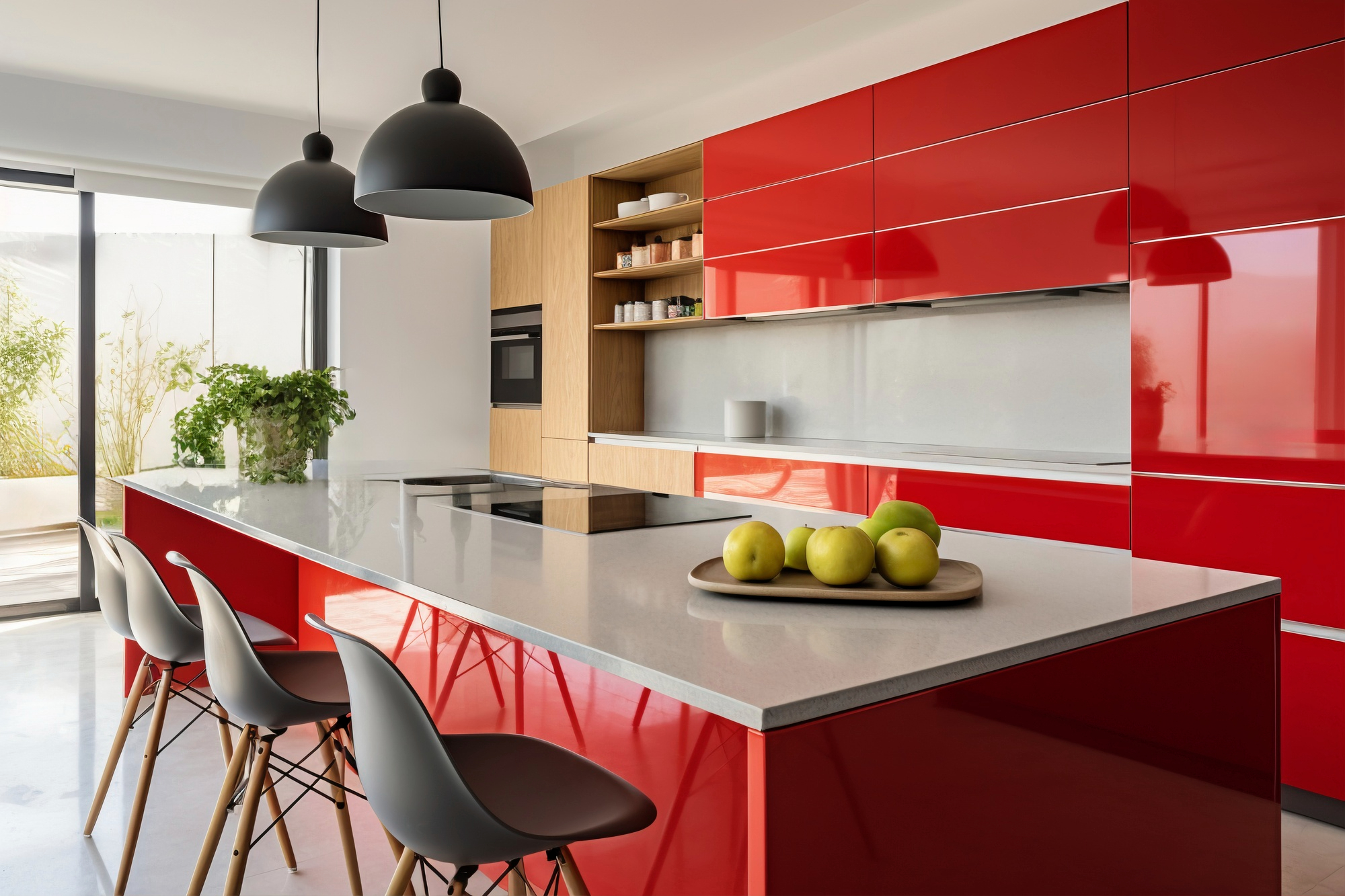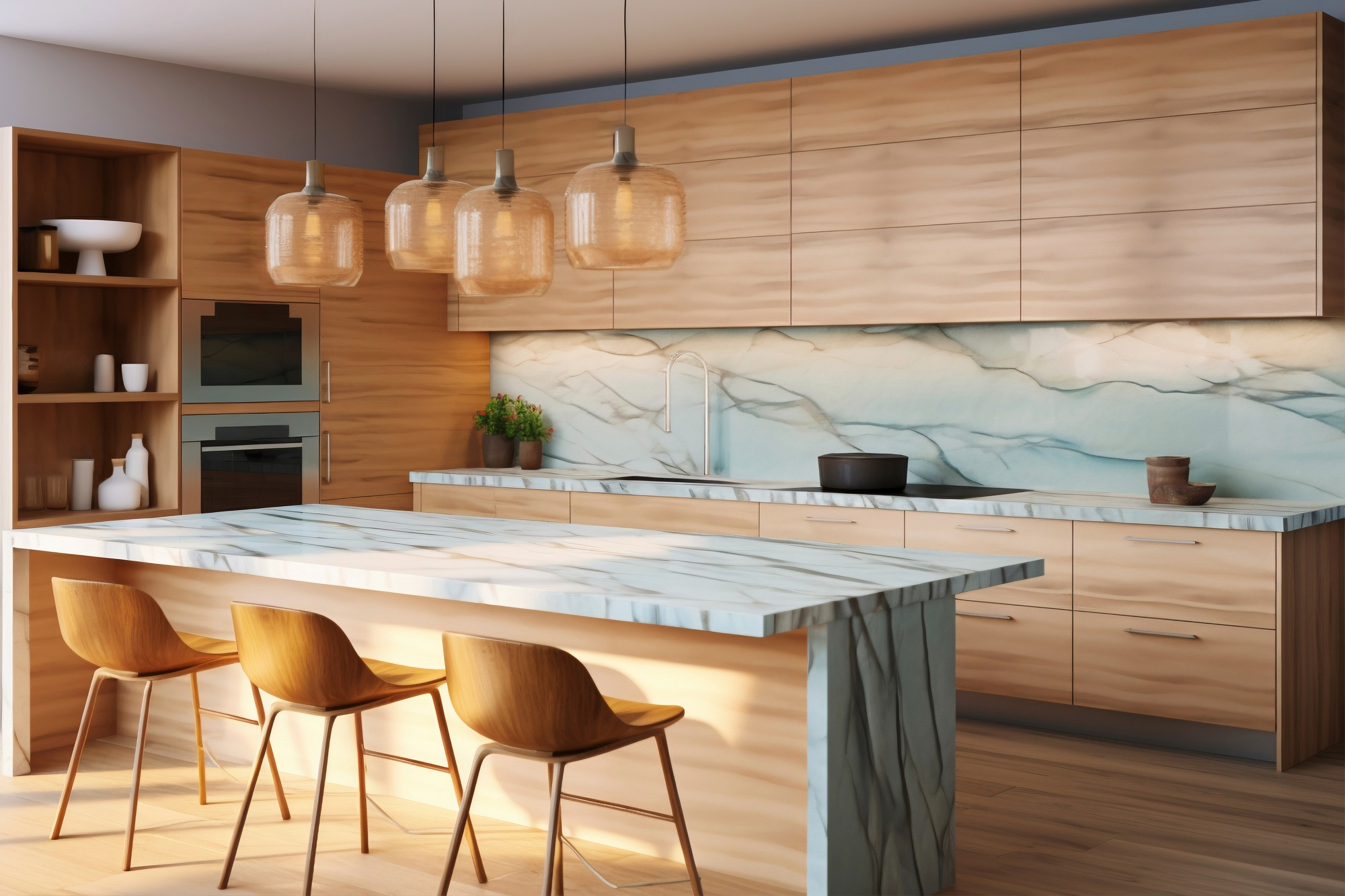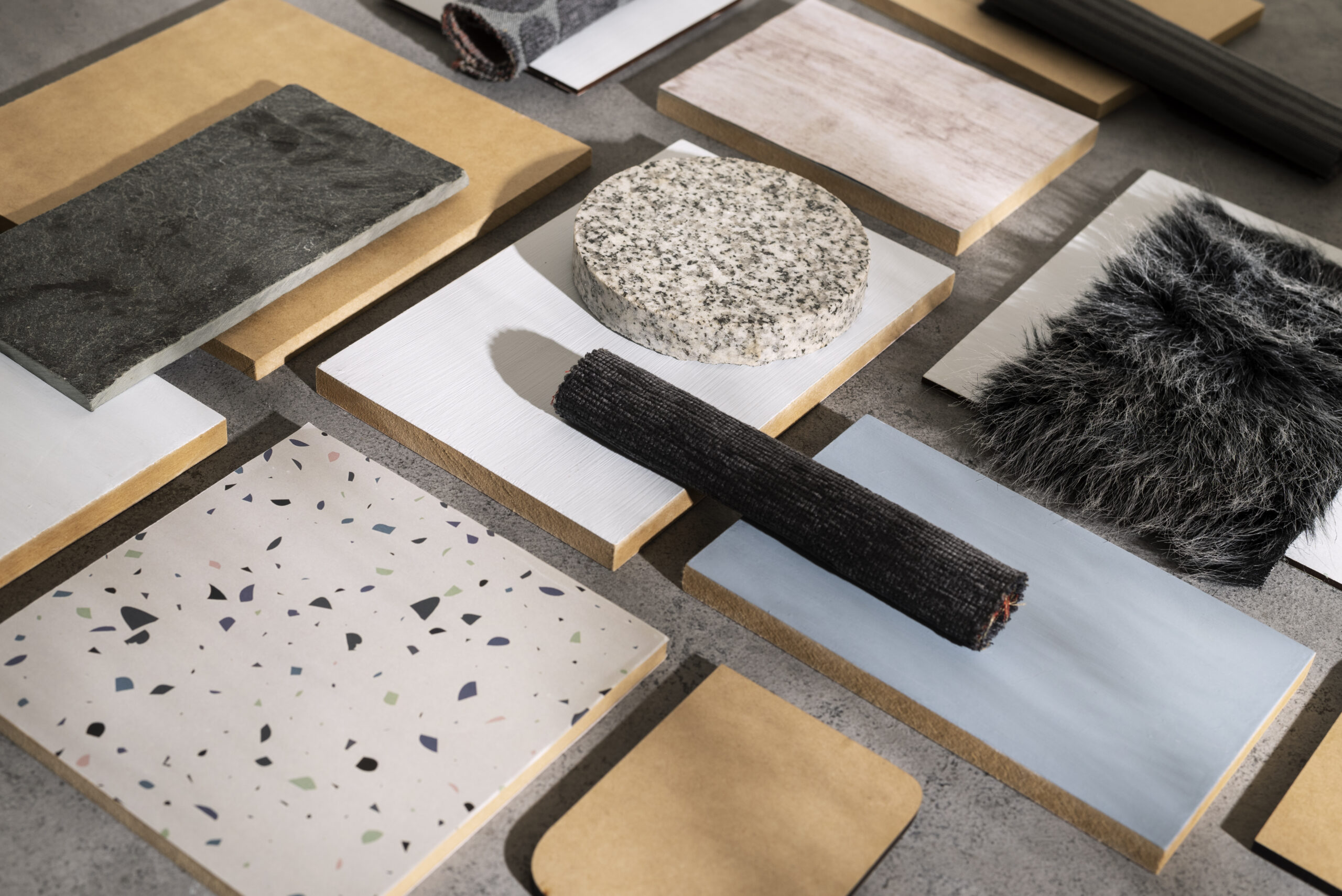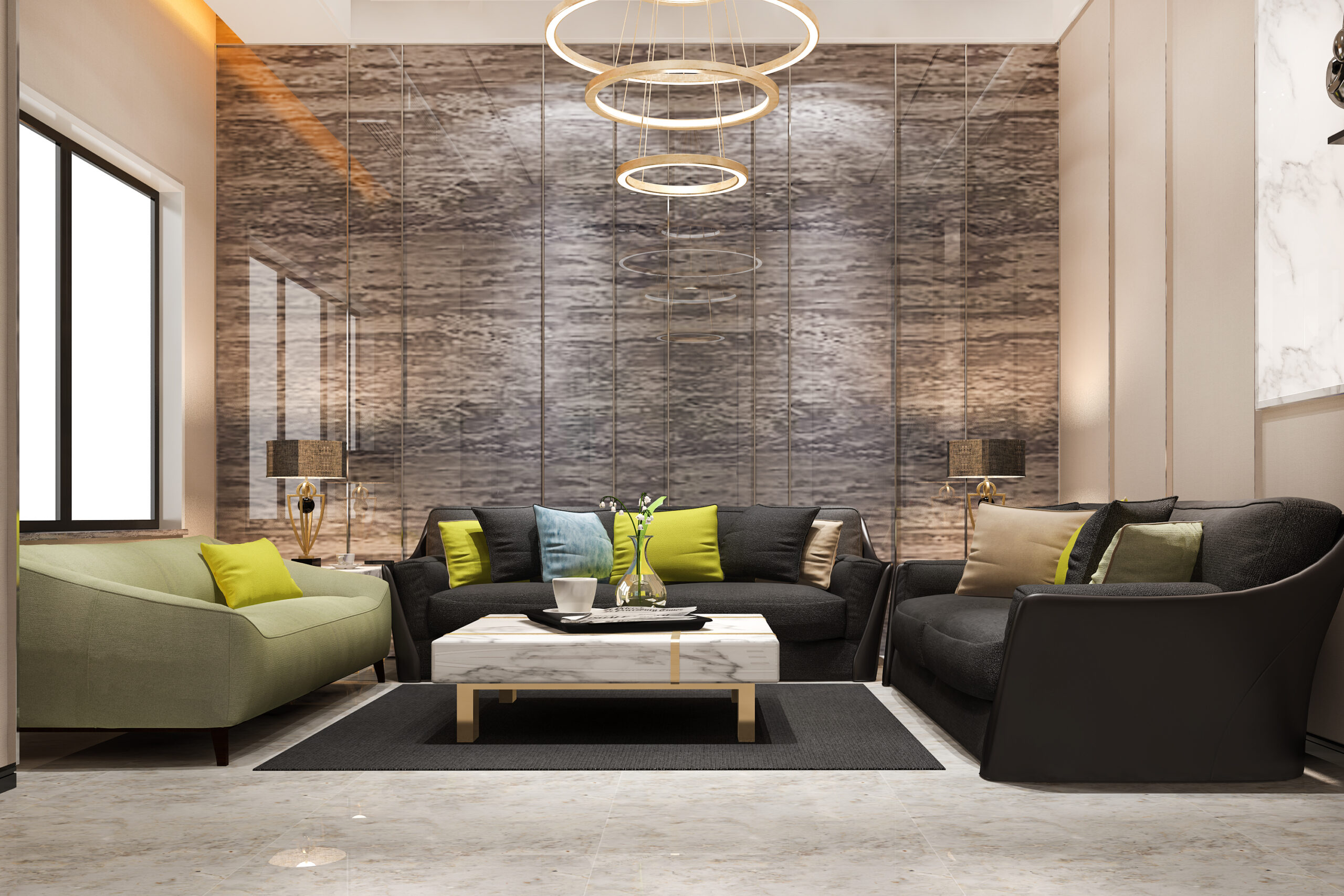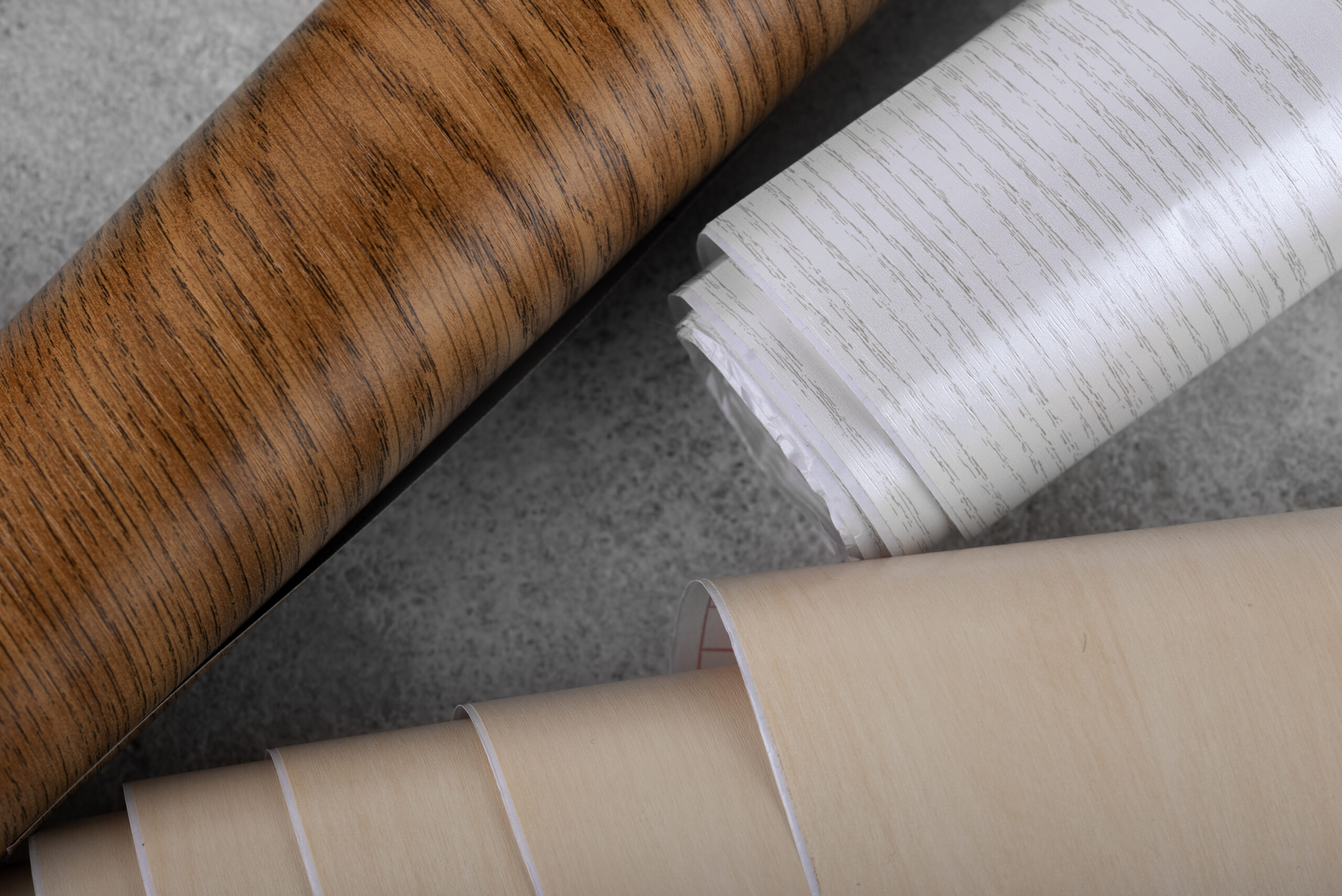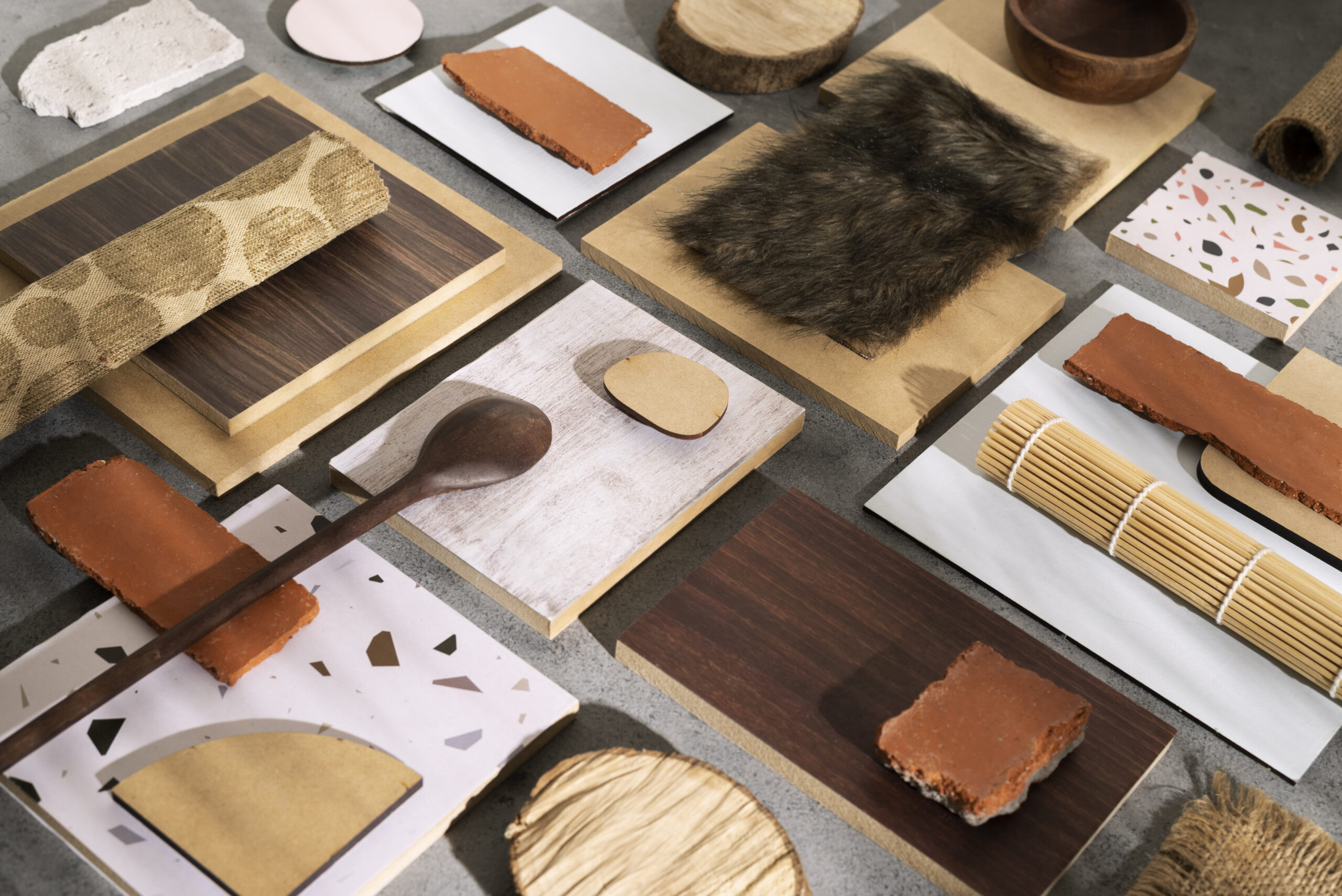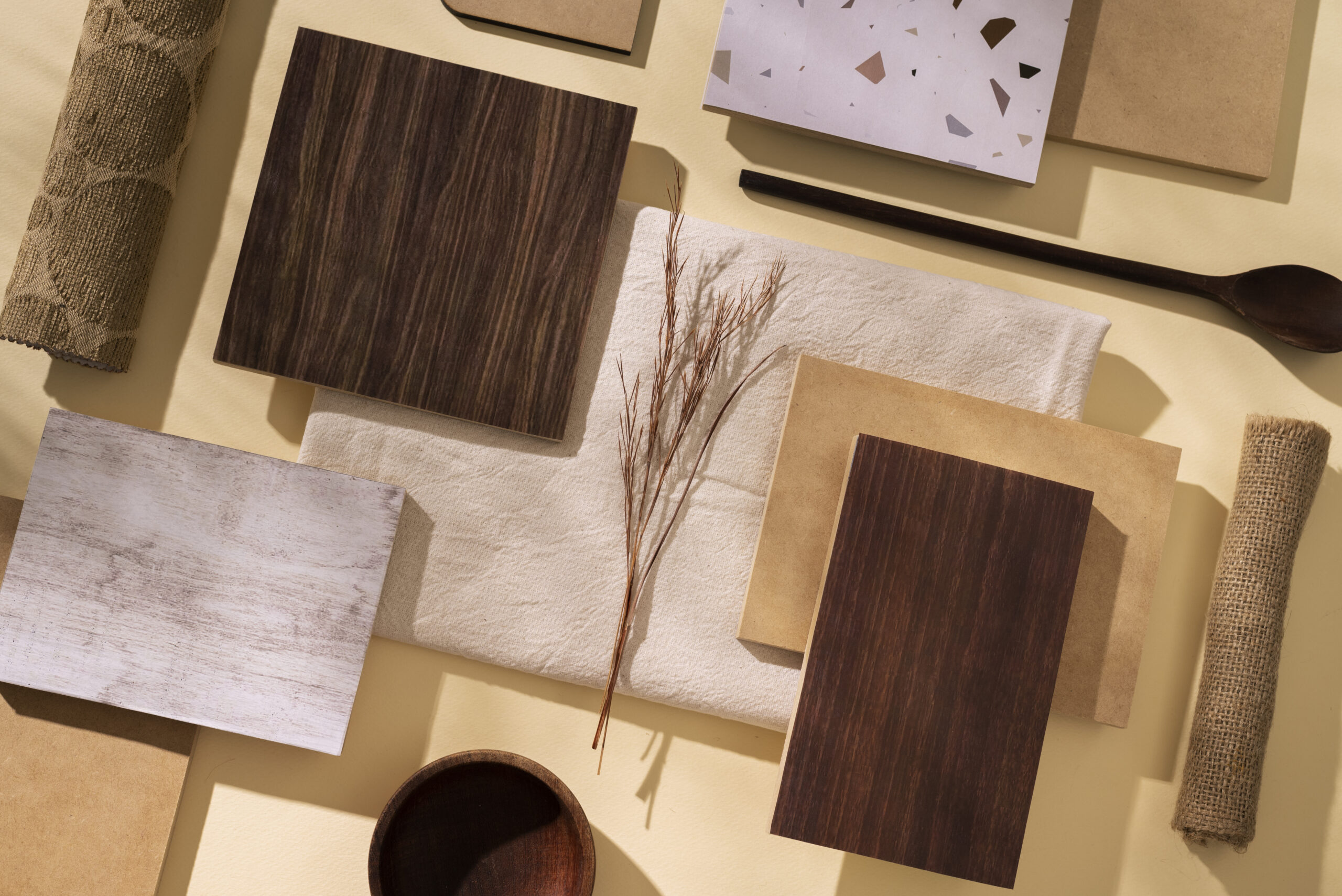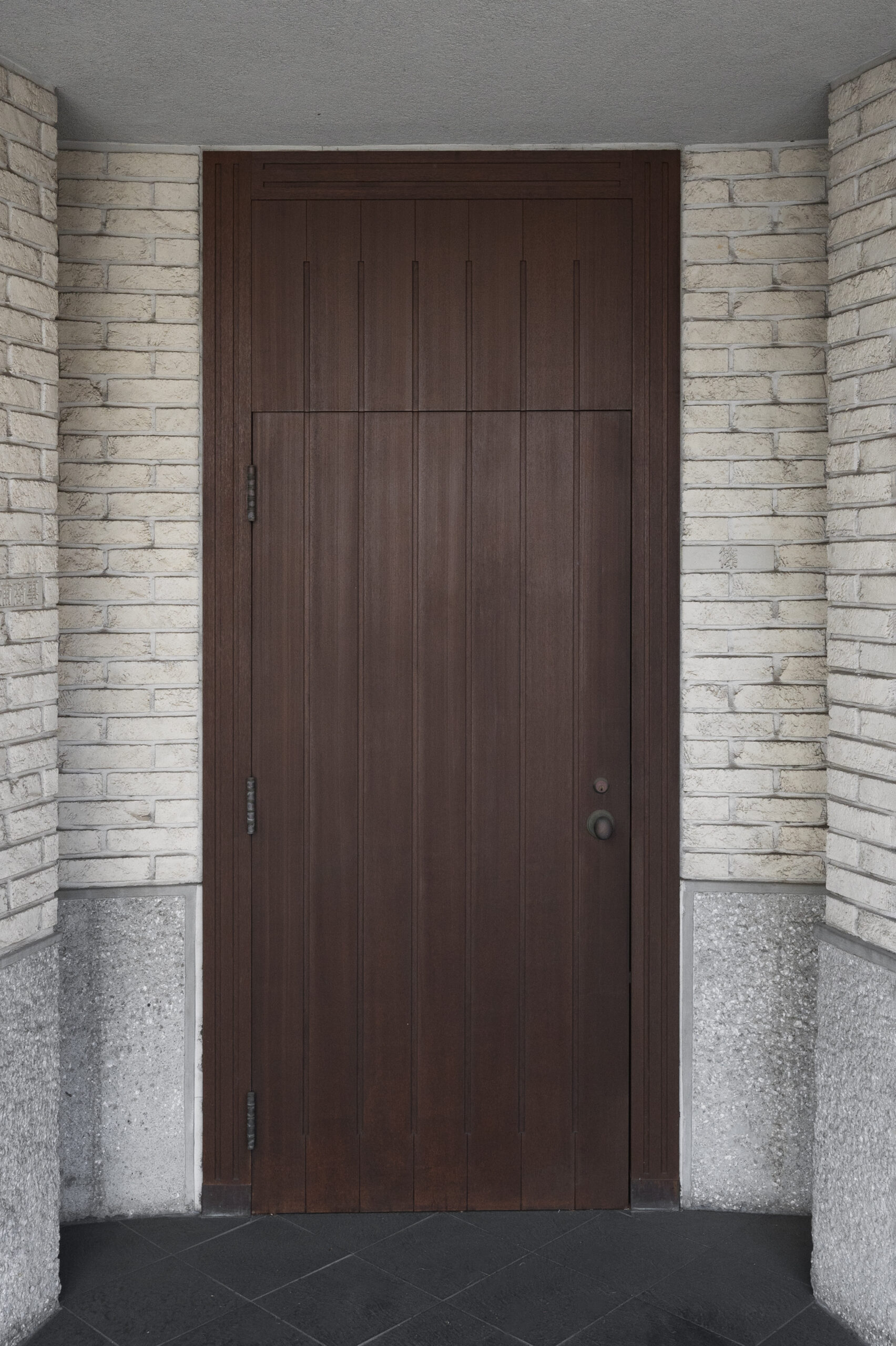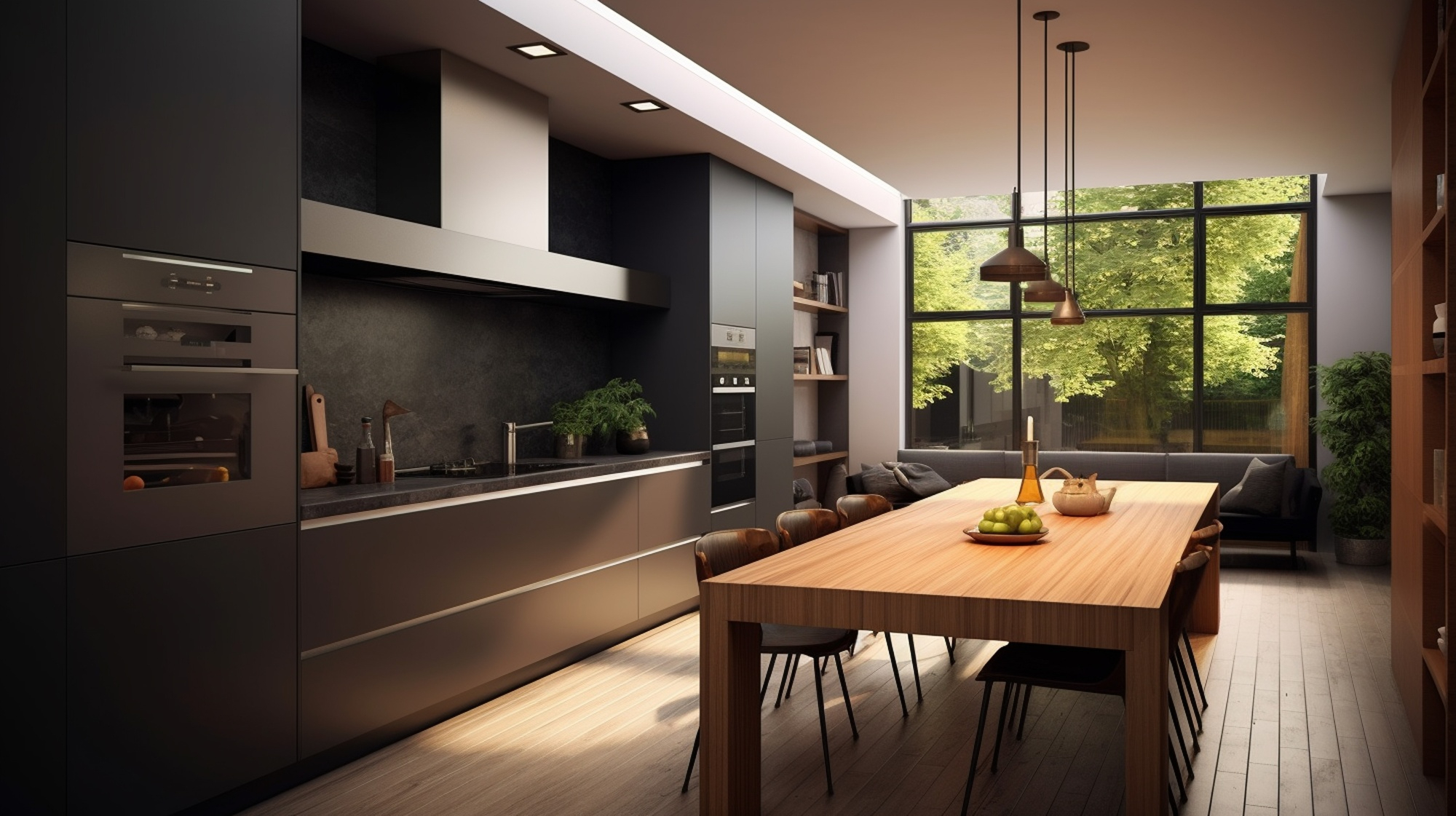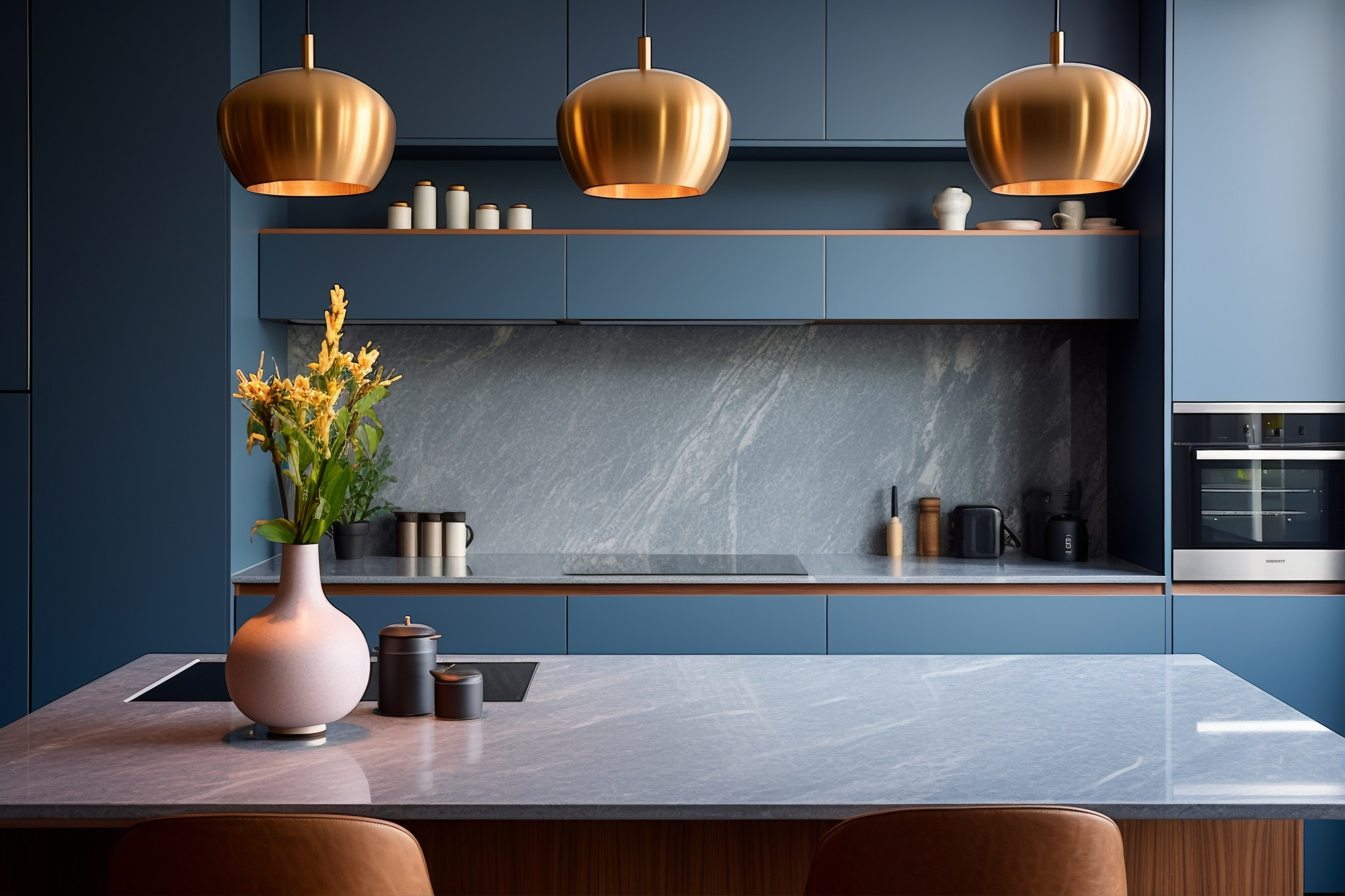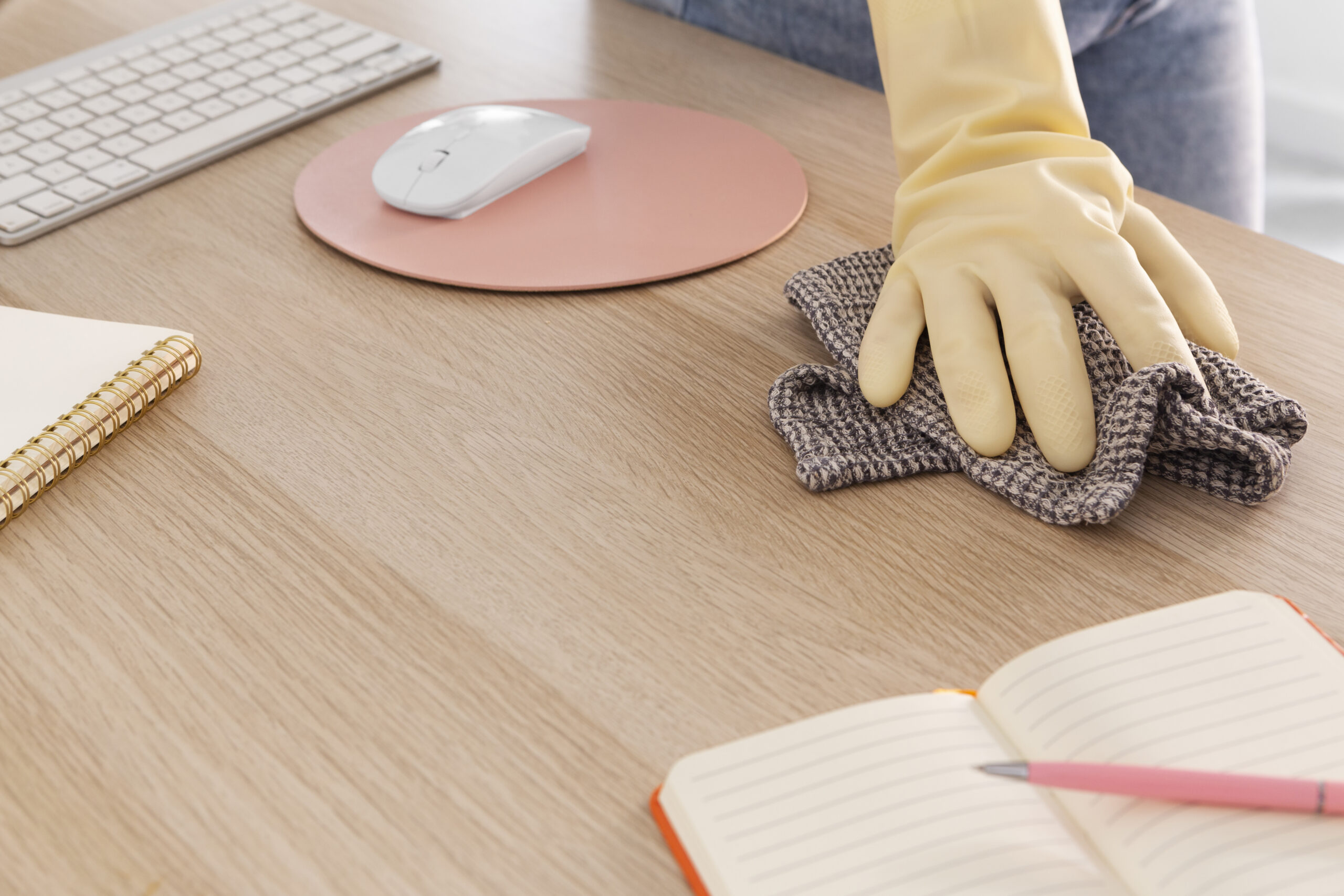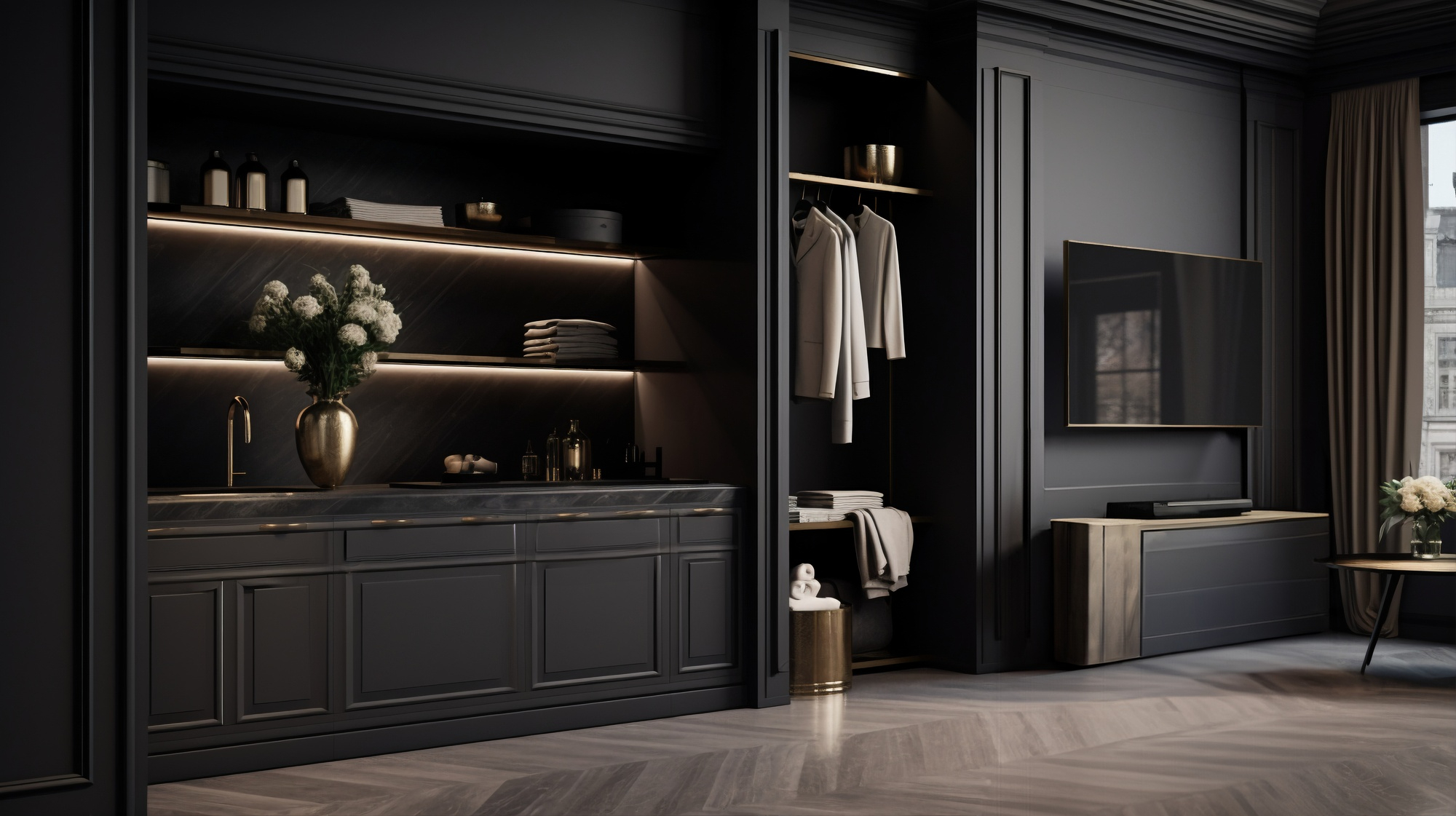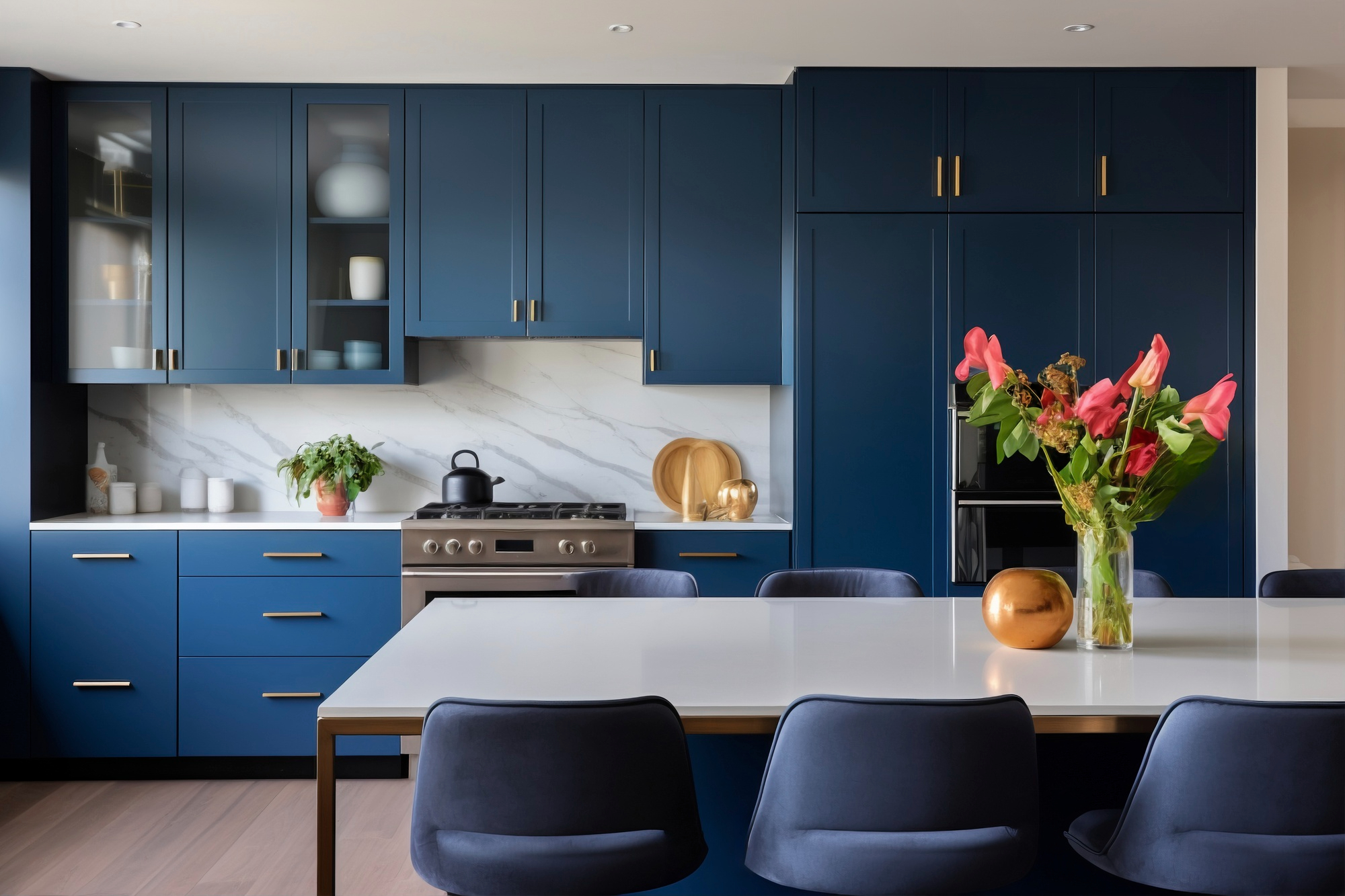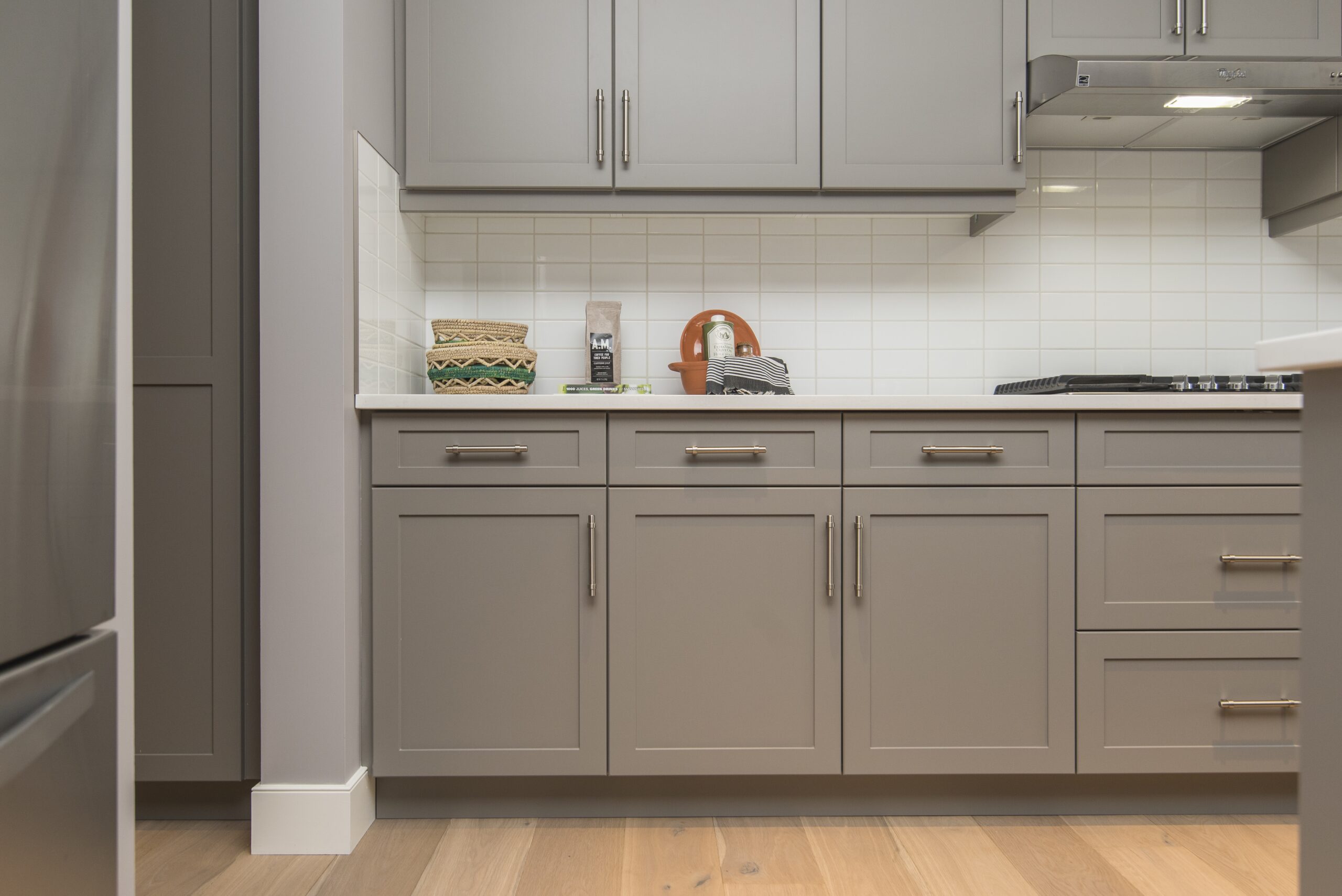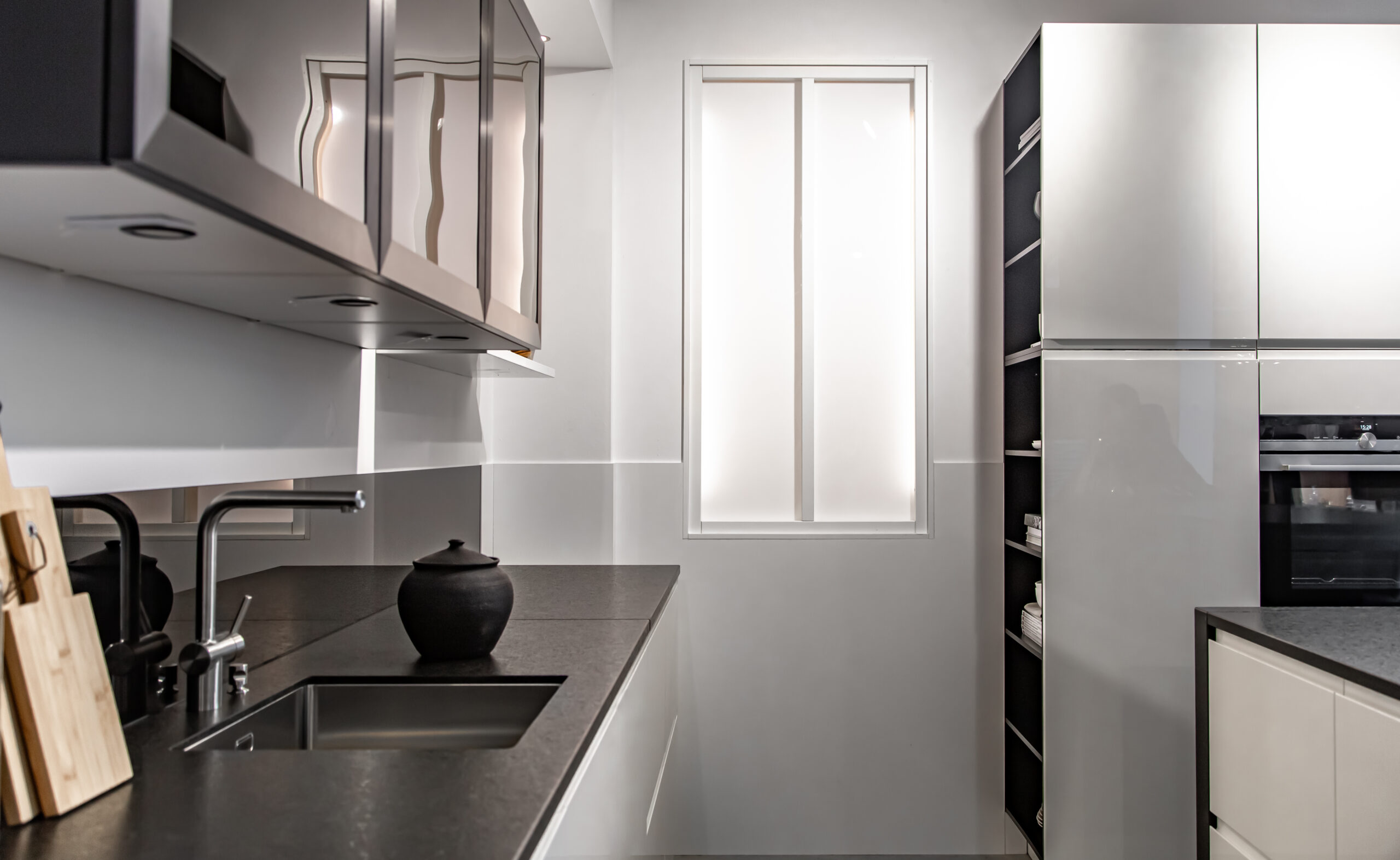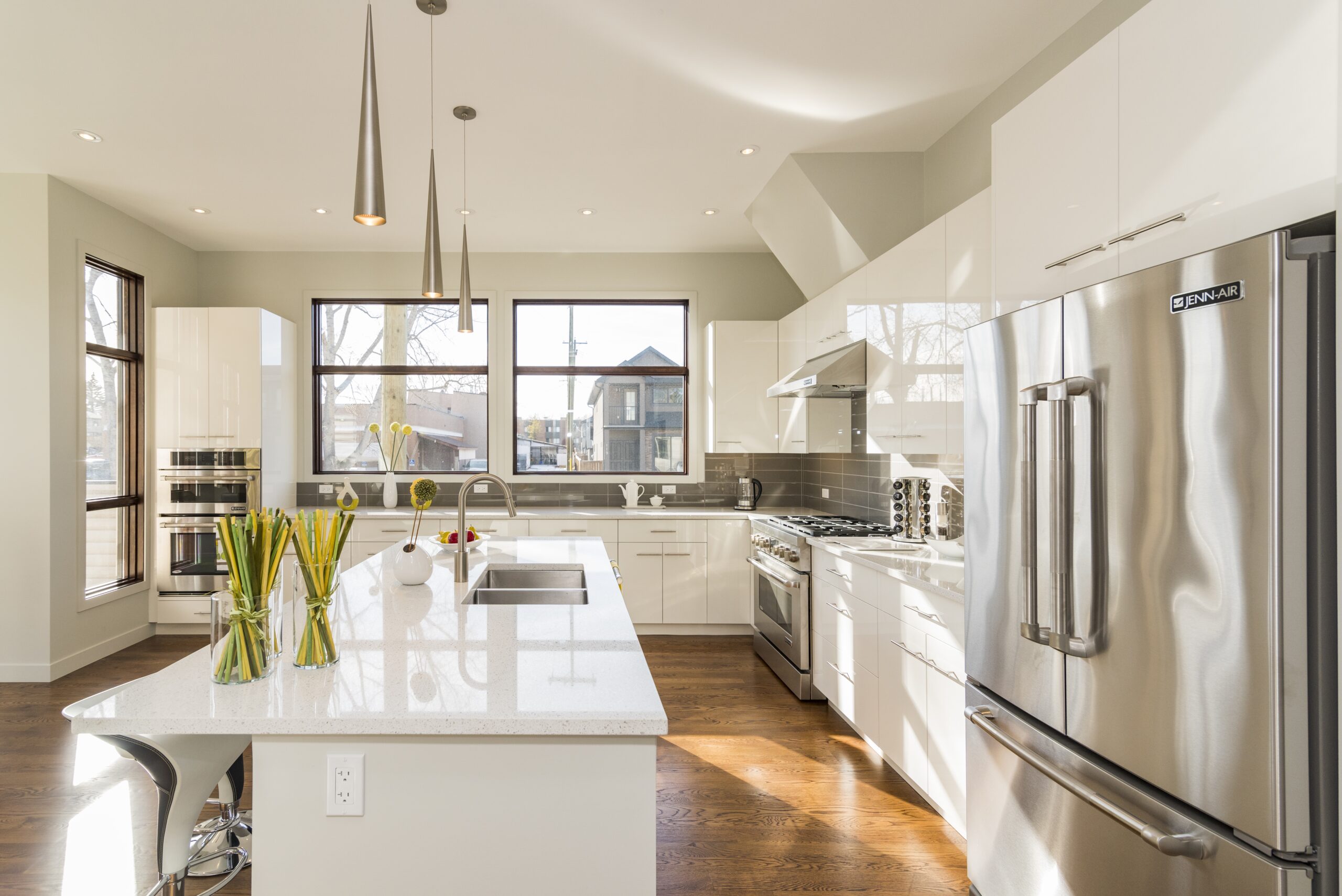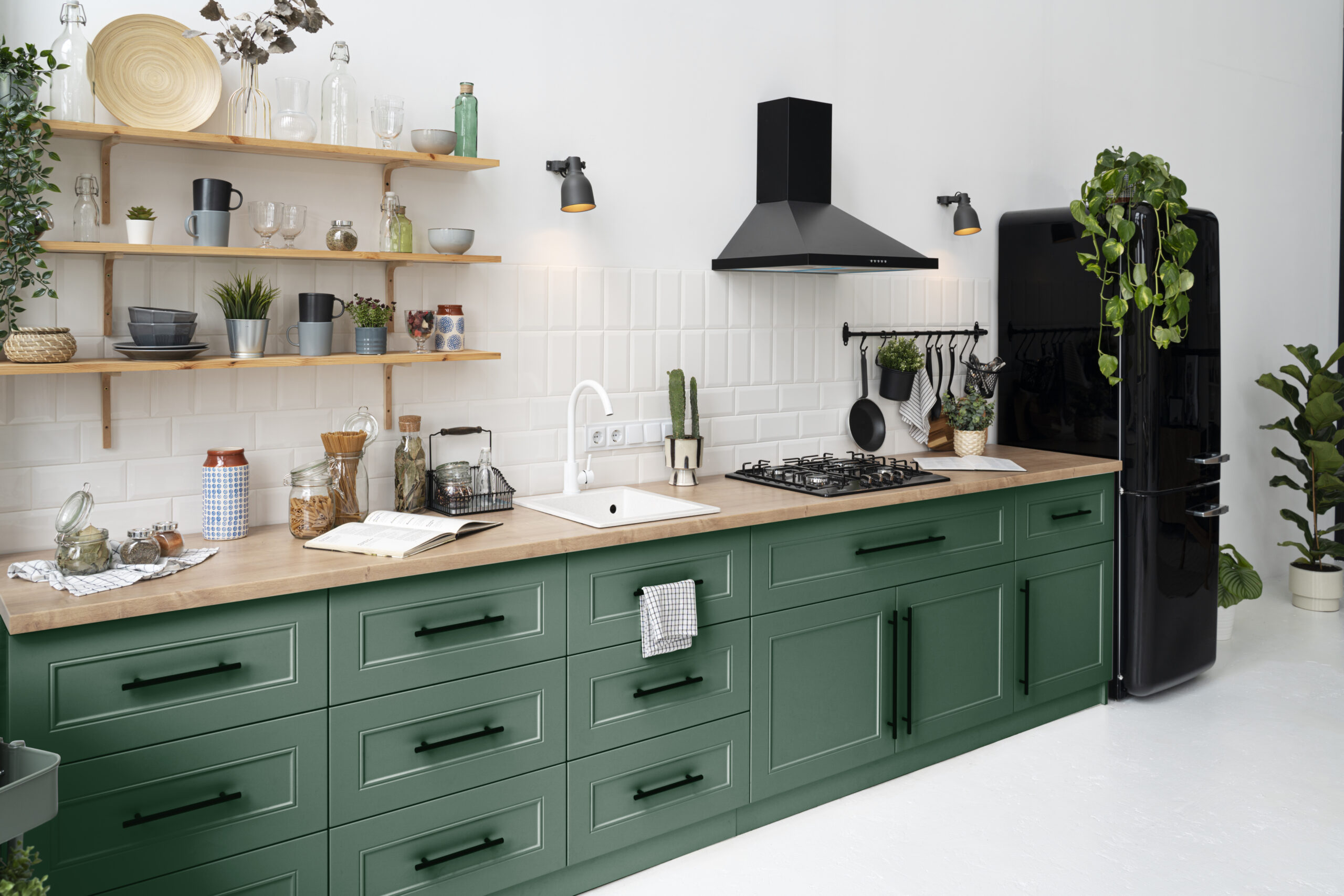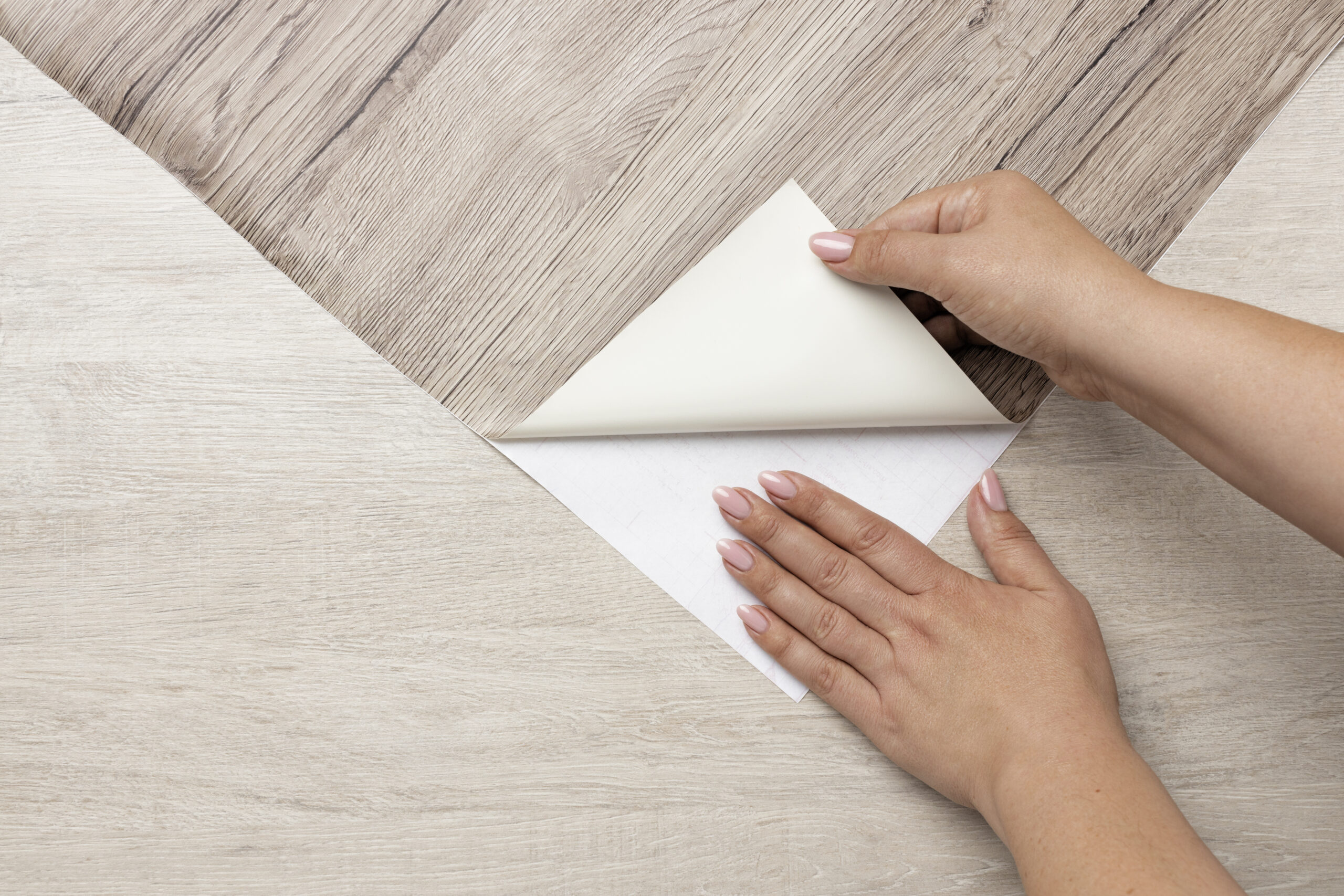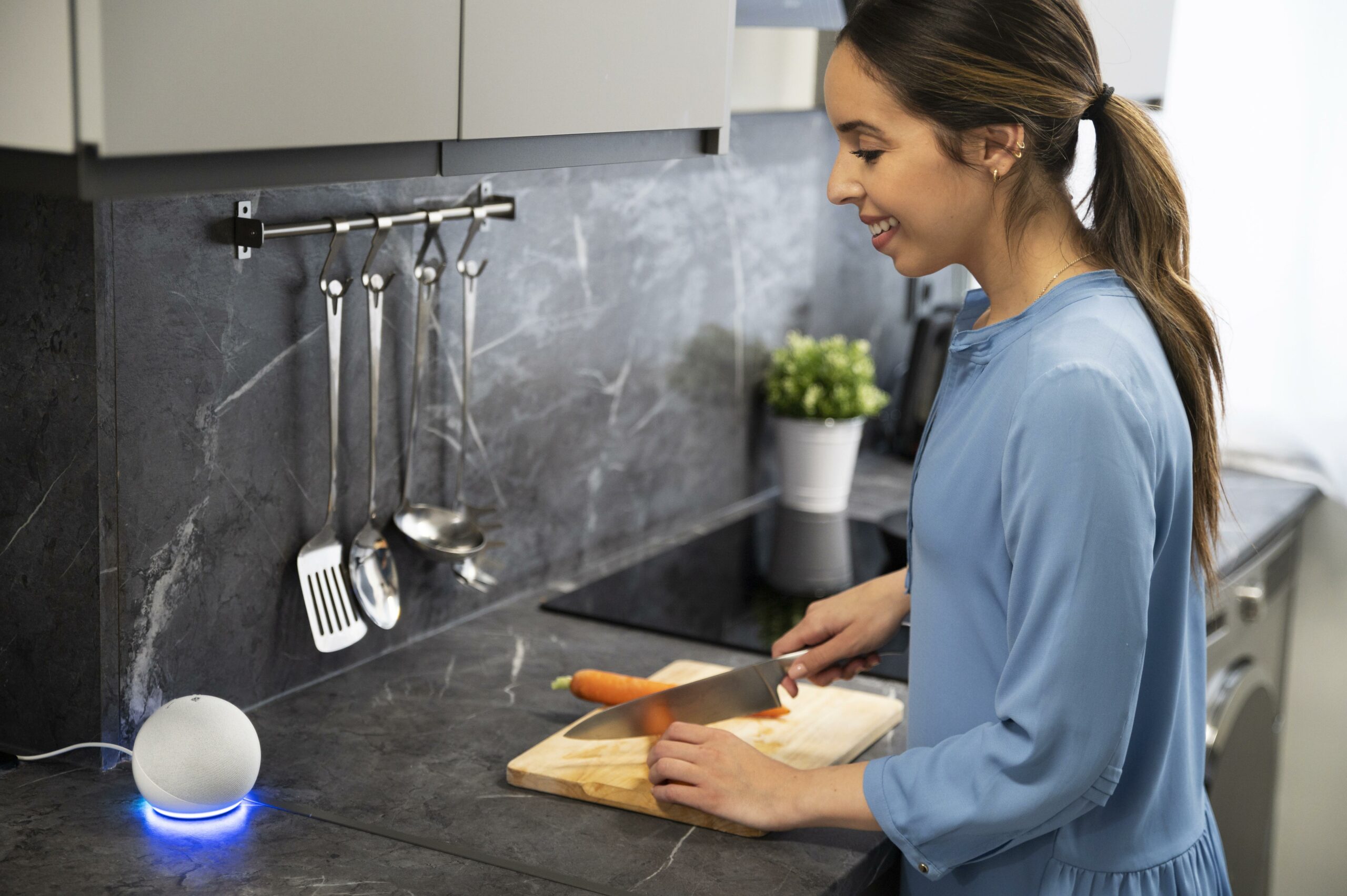The choice between real marble and marble laminates depends on various factors, including budget, maintenance, and aesthetic preferences. Let’s compare the two:
Natural Beauty and Uniqueness:
• Real marble is renowned for its natural beauty, unique veining, and luxurious appearance. Each piece of marble is one-of-a-kind, contributing to a sense of exclusivity.
Perceived Value:
• Marble is considered a high-end material, often associated with luxury and sophistication. Its natural beauty and timeless appeal can enhance the perceived value of a space.
Marble laminates:
Marble Laminates: Capturing Elegance in a Budget-Friendly Form.
Affordable Luxury:
• Marble laminates offer a cost-effective solution for those seeking the luxurious appearance of marble without the hefty price tag. This makes them an accessible choice for a broader range of budgets.
Imitating Natural Beauty:
• Designed to mimic the natural beauty of real marble, laminates feature high-resolution prints and textures that closely resemble the intricate veining and patterns found in genuine marble slabs.
Real Marble: Pros and Cons?
Real marble is celebrated for its timeless beauty and luxurious appearance, making it a coveted choice for high-end interior design. Its unique veining and natural patterns contribute to a one-of-a-kind aesthetic that adds unmatched elegance to spaces. Marble’s cool and smooth texture, along with its association with opulence, enhances the perceived value of surfaces like countertops and flooring. Additionally, when properly cared for, real marble can withstand the test of time, offering enduring beauty.
Real marble vs Marble laminate
Real Marble vs. Marble Laminate: Navigating Aesthetics, Costs, and Practicality.
Aesthetic Appeal:
• Real Marble: Real marble boasts unmatched natural beauty with unique veining and patterns, providing a luxurious and timeless aesthetic.
• Marble Laminate: Marble laminates mimic the look of real marble, offering high-resolution prints and textures that closely resemble the natural stone, providing a cost-effective alternative.
Cost Considerations:
• Real Marble: Known for its exclusivity, real marble is often associated with a higher price point. The cost includes not only the material but also installation and ongoing maintenance expenses.
Pros
Pros of Real Marble: Celebrating Natural Elegance.
Timeless Beauty:
• Real marble is renowned for its timeless and exquisite beauty. The unique veining and patterns create a luxurious aesthetic that has been admired for centuries.
Luxurious Appearance:
• The association of marble with luxury and opulence enhances the perceived value of spaces adorned with this natural stone. Its cool and smooth texture contributes to a high-end and sophisticated atmosphere.
Natural beauty and uniqueness
Natural Beauty and Uniqueness of Real Marble: A Timeless Elegance.
Intricate Veining and Patterns:
• Real marble is celebrated for its intricate veining and unique patterns, crafted by nature over millions of years. This natural artwork adds depth and character, creating surfaces that are truly one-of-a-kind.
Varied Color Palette:
• The natural diversity of marble extends to its color palette, offering an array of hues from classic whites and grays to vibrant reds and greens. This variability allows for personalized choices that align with specific design visions.
Durability and longevity:
urability and Longevity of Real Marble: A Sturdy Timeless Investment.
Sturdy Composition:
• Real marble is composed of metamorphic rock, primarily consisting of crystallized limestone. This robust composition provides a solid foundation for durability, ensuring the stone can withstand various environmental factors.
Long-Term Durability with Care:
• Real marble can offer long-term durability when cared for appropriately. Regular cleaning, prompt addressing of spills, and avoidance of harsh cleaning agents contribute to its longevity and sustained aesthetic appeal.
Heat resistance:
Heat Resistance of Real Marble: A Cool and Enduring Choice.
Natural Heat Resistance:
• Real marble exhibits inherent heat resistance, making it well-suited for applications where exposure to high temperatures is common. This property allows marble to maintain a cool surface even in warm environments.
Heat Retention without Warping:
• Marble retains heat well, offering a stable surface for various applications. Importantly, it does so without warping or undergoing structural changes, ensuring its long-term integrity in heat-exposed environments.
Cons
Cons of Real Marble: Navigating Challenges for Timeless Elegance.
Porous Nature:
• The porous nature of marble makes it prone to stains from liquids like red wine, coffee, or acidic substances. Regular sealing is required to minimize the stone’s absorbent properties and protect against potential stains.
Limited Color Options:
• While marble comes in a variety of colors, the range may be limited compared to some synthetic alternatives. Those seeking bold and unconventional color choices may find real marble’s palette more restrained.
High cost
High Cost of Real Marble: Weighing Elegance Against Budget Constraints.
Installation Costs:
• Installing real marble can incur additional expenses due to its weight and the precision required in cutting and fitting. Professional expertise is often necessary, adding to the overall cost of the installation.
Alternative Material Comparisons:
• Individuals with budget constraints may opt for alternative materials that mimic the appearance of marble at a fraction of the cost. These alternatives can provide a more budget-friendly solution without compromising on aesthetics.
Maintenance and care requirements:
Maintenance and Care Requirements for Real Marble: Preserving Timeless Beauty.
Protection Against Scratches:
• Precautions: Despite its durability, marble is susceptible to scratches from sharp objects. Using cutting boards, trivets, or coasters provides a protective layer, preventing scratches on surfaces like countertops.
Thermal Protection:
• Preventing Thermal Shock: Marble is sensitive to sudden temperature changes. Using trivets or hot pads under hot cookware or heated items helps prevent thermal shock and potential stress fractures.
Vulnerability to staining and etching:
Vulnerability to Staining and Etching in Real Marble: Mitigating Risks for Lasting Beauty.
Immediate Spill Cleanup:
• Prompt Action Against Stains: Quick and thorough cleaning of spills, especially those from acidic or colorful substances, helps prevent them from permeating the marble. A soft cloth or paper towel should be used for blotting.
Avoidance of Acidic Foods:
• Etching Risks from Acids: Acidic foods and substances, like citrus fruits, vinegar, or acidic cleaners, can cause etching on the marble surface. Cutting boards and immediate cleaning minimize this risk.
Marble Laminates: Pros and Cons?
Pros: Marble laminates offer a cost-effective solution for individuals seeking the sophisticated appearance of marble without the high price tag. These laminates successfully replicate the natural beauty of marble with high-resolution prints and textures, providing a consistent and versatile aesthetic across various applications. Marble Laminates: A Practical Balance of Elegance and Affordability.
Cons: While marble laminates provide an affordable alternative to real marble, they may lack the authentic feel and depth of natural stone. The durability of laminates may not match that of real marble, making them more susceptible to wear over time.
Marble effect laminate
Marble Effect Laminate: Elegance without the Expense.
Resistance to Stains and Scratches:
• Practical Maintenance: Marble effect laminates are engineered for durability, offering resistance to stains and scratches. This practical feature makes them well-suited for high-traffic areas and spaces where maintenance needs to be minimal.
Budget-Friendly Solution:
• Cost-Effective Choice: The primary advantage of marble effect laminate is its cost-effectiveness. Homeowners can achieve the luxurious look of marble without stretching their budget, making it an attractive option for those who value aesthetics and affordability.
Pros
Pros of Marble Effect Laminate: Elevating Aesthetics with Practicality.
Customization Options:
• Variety of Designs: While not as customizable as real marble, marble effect laminates come in a variety of designs, colors, and finishes. This allows homeowners to choose a laminate that aligns with their specific design preferences and the overall style of their home.
Environmental Considerations:
• Potential Sustainability: In some cases, marble effect laminates may have a lower environmental impact compared to real marble. This consideration aligns with the growing interest in sustainable and eco-friendly design choices, making marble effect laminate a more environmentally conscious option.
Cost-effective alternative:
Cost-Effective Alternatives: Exploring Budget-Friendly Design Solutions.
Vinyl Plank Flooring:
• Versatile and Affordable: Vinyl plank flooring is a versatile and budget-friendly option that replicates the appearance of hardwood. It is water-resistant, making it suitable for areas prone to moisture, and its ease of installation further contributes to cost savings.
Ceramic Subway Tiles:
• Classic Charm on a Budget: Ceramic subway tiles are a cost-effective choice for creating timeless and classic designs in kitchens and bathrooms. Their simplicity and affordability make them a popular option for achieving a stylish aesthetic without breaking the bank.
Easy installation and maintenance:
Easy Installation and Maintenance: Simplifying Home Design and Care.
Engineered Wood:
• Click-and-Lock or Tongue-and-Groove Systems: Engineered wood often utilizes click-and-lock or tongue-and-groove systems for installation. These mechanisms simplify the process, allowing planks to securely fit together without the need for intricate tools or extensive expertise.
Ceramic Subway Tiles:
• Basic Tile Installation: Ceramic subway tiles, with their simple rectangular shape, facilitate a basic tile installation process. Homeowners can explore DIY options for smaller projects, such as kitchen backsplashes, where the installation is less intricate.
Wide range of designs:
Marble effect laminates boast a diverse and expansive range of designs, catering to various aesthetic preferences and interior styles. Thanks to advanced printing technologies, these laminates authentically replicate the intricate veining, colors, and patterns found in natural marble. Whether homeowners prefer the classic elegance of Carrara marble, the bold statements of black marble, or the unique veining patterns of Calacatta marble.
which marble is best for kitchen:
Best Marble Choices for Kitchen Surfaces: Balancing Beauty and Practicality.
Carrara Marble:
• Timeless Elegance: Carrara marble is renowned for its classic, soft gray background and delicate veining. It’s a popular choice for kitchen countertops, providing a timeless and sophisticated look.
Statuario Marble:
• Distinctive Veining: Statuario marble features bold, dark veining against a white or light gray background. Its dramatic appearance makes it a striking choice for kitchen islands or statement countertops.
Cons
Cons of Using Marble in the Kitchen: Navigating Challenges for Timeless Elegance.
Porous Nature:
• Stain Vulnerability: Marble’s porous composition renders it susceptible to stains from liquids like red wine, coffee, or acidic substances. Regular sealing is necessary to minimize its absorbent properties and protect against potential discoloration.
Limited Color Options:
• Restrained Palette: While marble comes in various colors, the range may be limited compared to some synthetic alternatives. Homeowners seeking unconventional color choices may find marble’s palette more restrained.
Prone to water damage:
Prone to Water Damage: Managing Moisture Challenges with Marble.
Sealing Imperatives:
• Protective Sealant Application: To mitigate the risk of water damage, it is essential to apply a high-quality sealer to marble surfaces. The sealer creates a protective barrier, reducing the stone’s absorbency and helping prevent water penetration.
Proactive Spill Management:
• Prompt Spill Cleanup: Immediate cleaning of spills, especially those involving liquids that can potentially stain or damage marble, is crucial. Water, when left standing on the surface, can contribute to discoloration or other forms of damage over time.
Less authentic appearance:
Less Authentic Appearance: Navigating Aesthetic Expectations.
Surface Texture Differences:
• Smoothness vs. Texture: Real marble often exhibits unique textures and tactile qualities that may be challenging to replicate in laminates. The smoothness of the laminate surface might lack the nuanced feel and depth that can be experienced with genuine marble.
Edge Details:
• Challenges in Edge Realism: Achieving realistic edge details, such as the subtle bevels and contours found in natural marble, can be limited in laminates. This may contribute to a less authentic appearance, especially in areas where the edges are prominently visible.
Maintenance and Care Comparison:
Maintenance and Care Comparison: Weighing the Demands of Marble and Marble Laminates.
Ease of Daily Maintenance:
• Real Marble: Requires diligent daily maintenance, including prompt spill cleanup, regular wiping, and gentle cleaning with suitable products.
• Marble Laminates: Generally easier to maintain on a daily basis. Regular cleaning with mild cleaners is usually sufficient to preserve the appearance.
Long-Term Appearance Retention:
• Real Marble: The appearance of real marble can age gracefully, developing a natural patina. Regular maintenance and care contribute to its long-term aesthetics.
• Marble Laminates: Laminates aim to retain their appearance over time. While they may not develop a patina like natural stone, proper care ensures prolonged aesthetic appeal.
Best Looking Marble Laminate Design Ideas?
Marble laminate design ideas offer a versatile canvas to bring the timeless elegance of marble into your home without the high costs and maintenance associated with real stone. Consider incorporating Carrara-inspired laminates for a classic, serene ambiance in kitchens or bathrooms.
laminate marble design:
Calacatta Luxe:
• Opulent Veining: Elevate your interiors with the opulence of Calacatta marble-inspired laminates. The bold veining against a white or light gray background creates a luxurious aesthetic, making these laminates ideal for statement pieces like dining tables or accent walls.
Statuario Statement:
• Dramatic Finesse: Make a dramatic statement with Statuario marble-inspired laminate designs. The bold veining against a white or light gray backdrop adds finesse to kitchen islands, countertops, or as a striking feature in bathrooms.
Conclusion:
In conclusion, the choice between real marble and marble laminates ultimately depends on individual priorities, budget considerations, and maintenance preferences. Real marble offers a luxurious and authentic aesthetic but comes with a higher cost and requires more diligent care.
Cost-Effectiveness:
Real marble tends to be more expensive due to its natural origin, while marble laminates offer a budget-friendly alternative without sacrificing style.
Cost-Effectiveness: Customization and Variety:
Both options provide a range of colors and patterns, but laminates can offer more versatility in design, allowing for customization to suit specific preferences.
FAQ
What is marble laminate made of?
Marble laminate is typically composed of layers of paper or fabric impregnated with melamine resin and a decorative layer featuring a high-resolution image of marble. These layers are then bonded together using heat and pressure. The top layer is protected by a clear melamine or resin coating, providing durability and resistance to scratches, stains, and moisture.
Is marble laminate good?
Yes, marble laminate can be a good choice for various applications. It offers an attractive and realistic alternative to real marble, providing a similar aesthetic without the associated high costs and maintenance requirements. Marble laminates are durable, resistant to scratches and stains, and easy to clean, making them suitable for high-traffic areas or spaces where hygiene is crucial.
Can marble be laminated?
Yes, marble can be laminated to create a material known as marble laminate or laminate with a marble finish. Marble laminates typically consist of multiple layers, including a base layer of Medium-Density Fiberboard (MDF) or particleboard, a layer with a high-resolution image of marble, and a protective top layer. These layers are bonded together using heat and pressure.
Are marble laminate countertops better than real marble?
Marble laminate countertops offer distinct advantages over real marble countertops in certain scenarios. While real marble boasts a luxurious and authentic appearance, it is susceptible to scratches, stains, and requires regular maintenance. Marble laminate countertops, on the other hand, provide a more durable and budget-friendly alternative.
Are marble laminate waterproof?
Marble laminate is generally water-resistant but not entirely waterproof. The surface of marble laminate is typically treated to be resistant to moisture, making it suitable for areas like kitchens and bathrooms where occasional spills may occur. However, prolonged exposure to standing water or excessive moisture can still potentially damage the material over time.

